November 6, 2022
Martha O'Kennon
Another week with the world sliding into Winter. We've had days though of greater than 60 F temperatures. A few creatures still cling to the Wall, especially the South Wall. I'm still debugging the new camera, waiting for that feeling that the finger that pushes the "do it" button is in fact framing the picture that you think it is. But so far there is still some life in that Wall and as long as there is, I'm going to show it to you!
The Purple Asters are appearing in smaller and smaller displays. And those tiny "Asteroids", the delicate Fleabane, still dot the empty spaces.
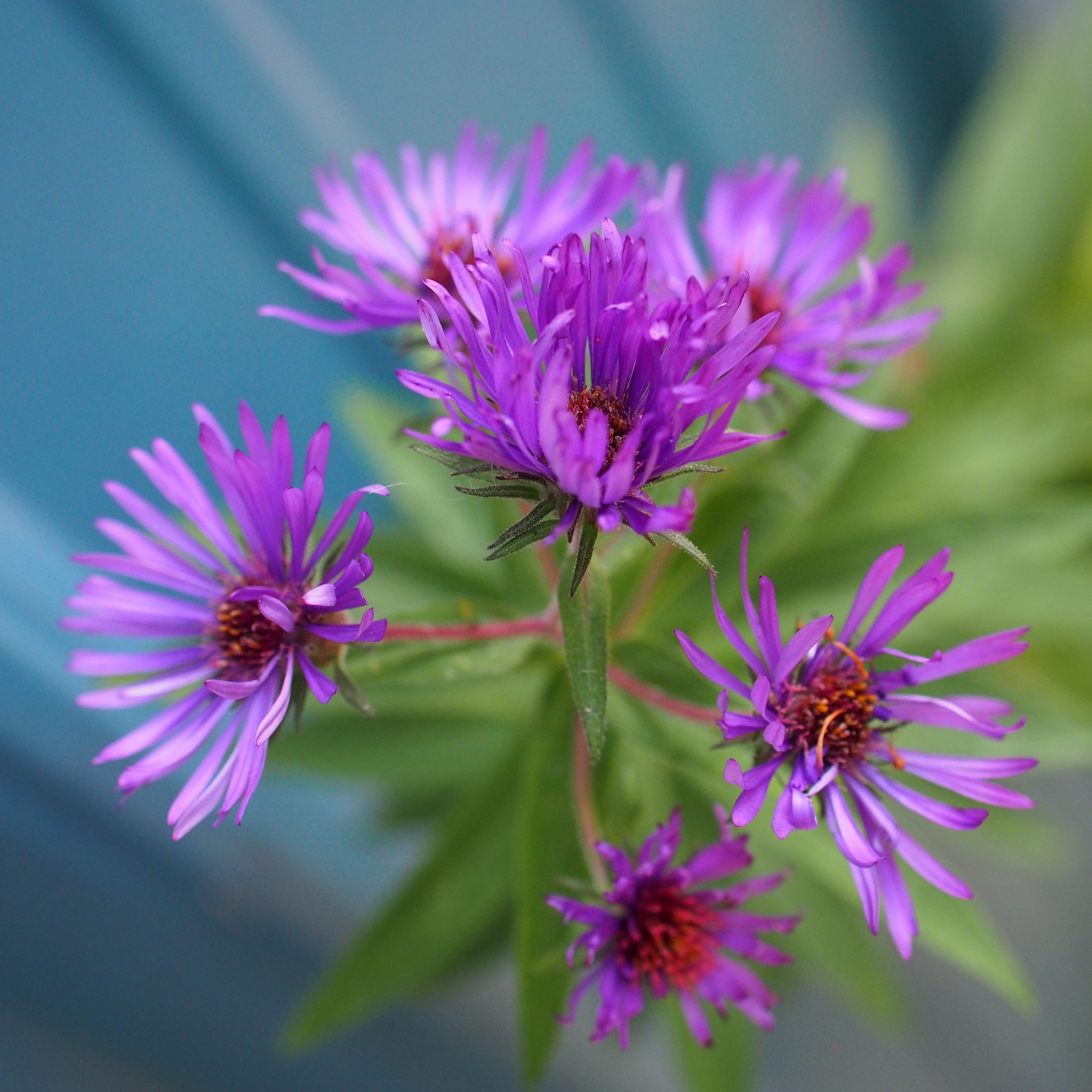
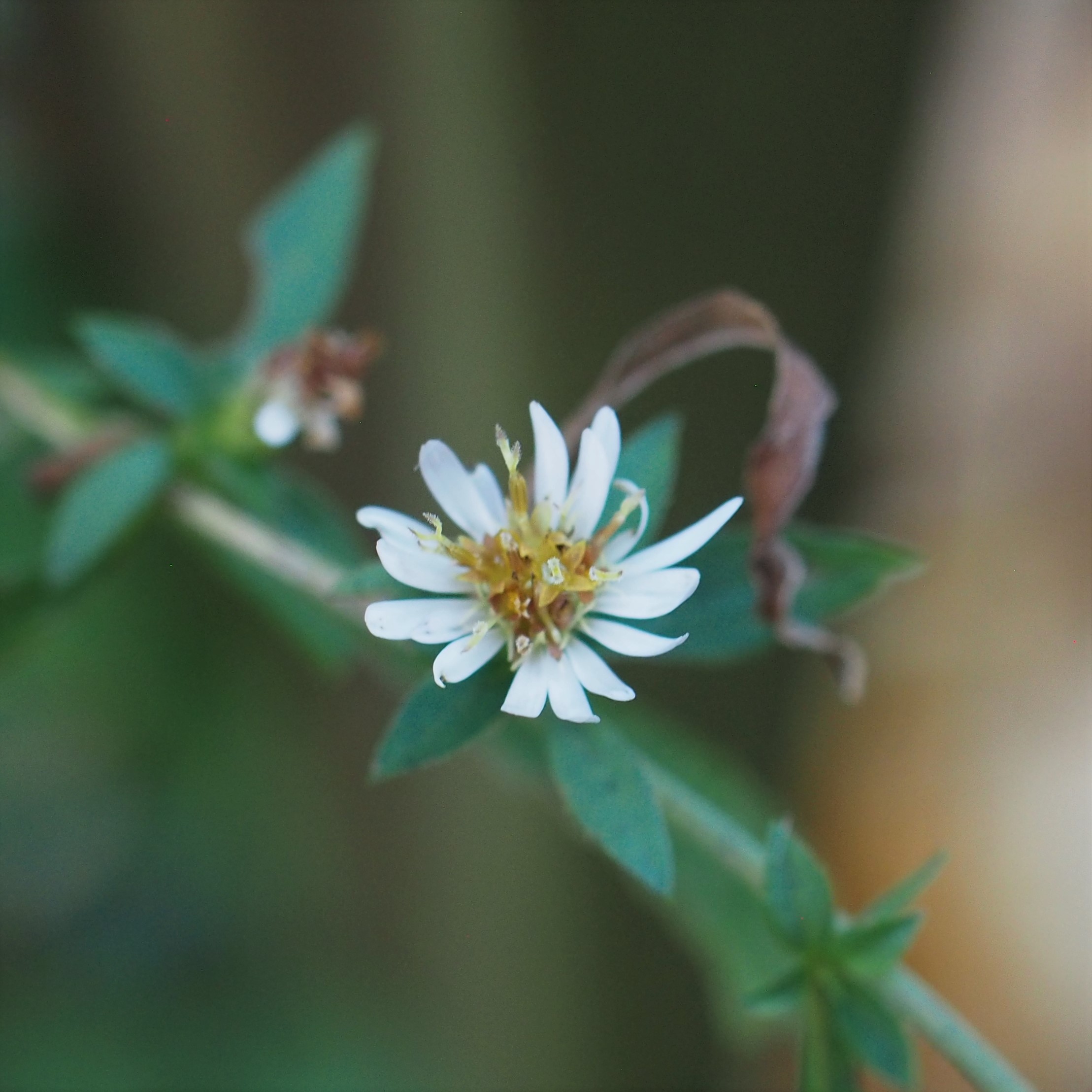
The tiny Winter Ants still trot along the walls. Some of them seem to have hairier gasters than others, and they also vary in color but I believe all of these are good old Winter Ants.
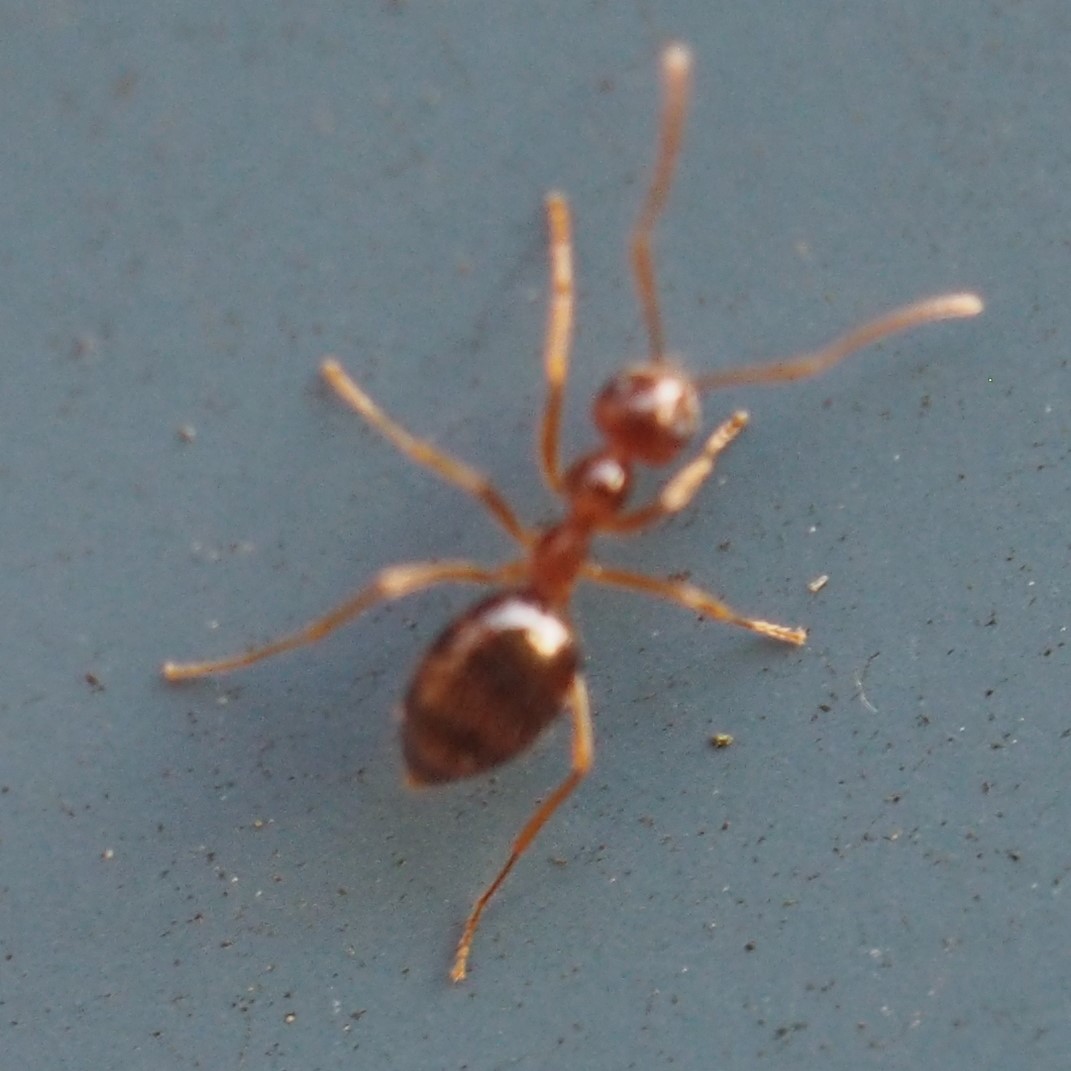
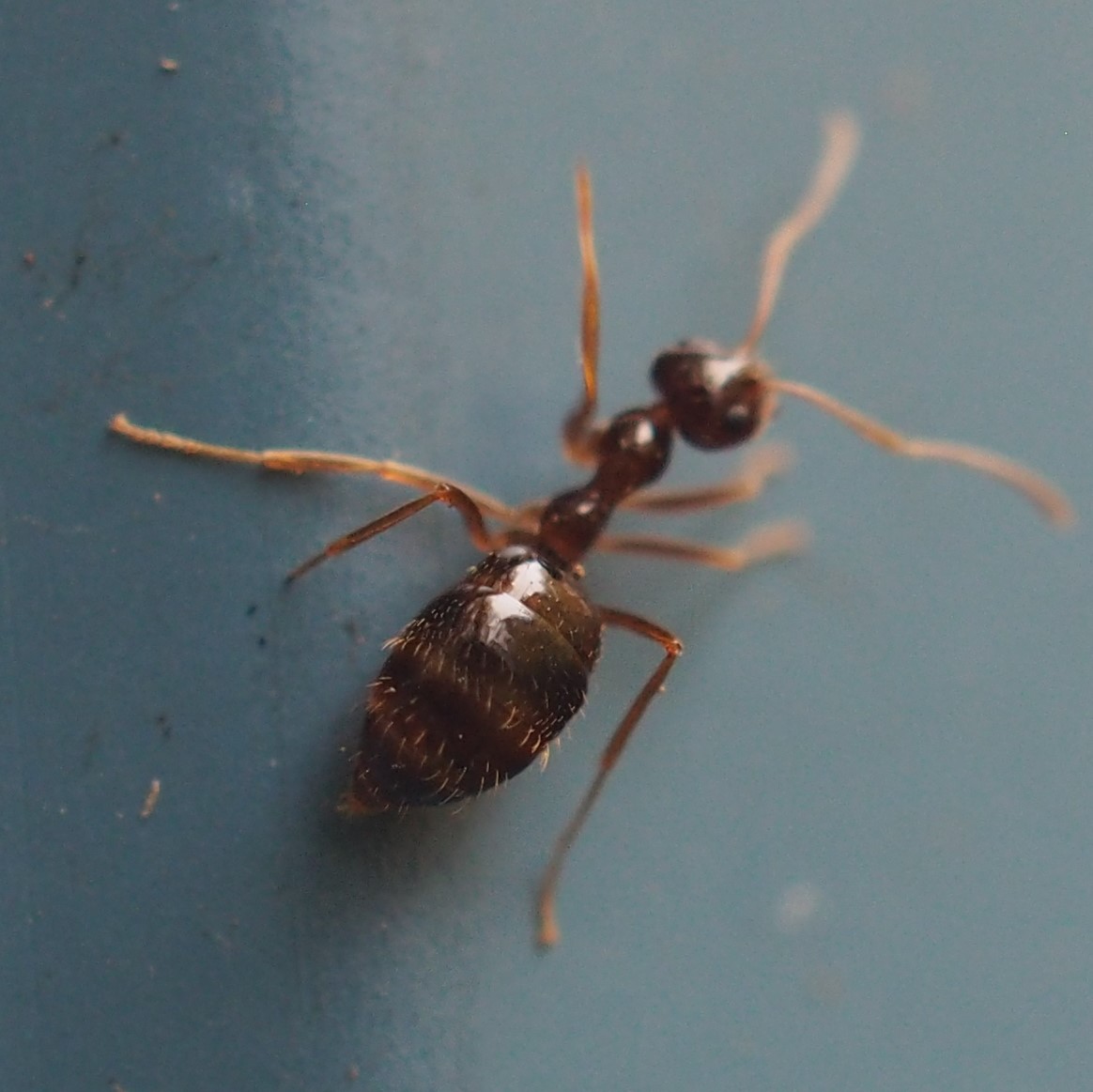
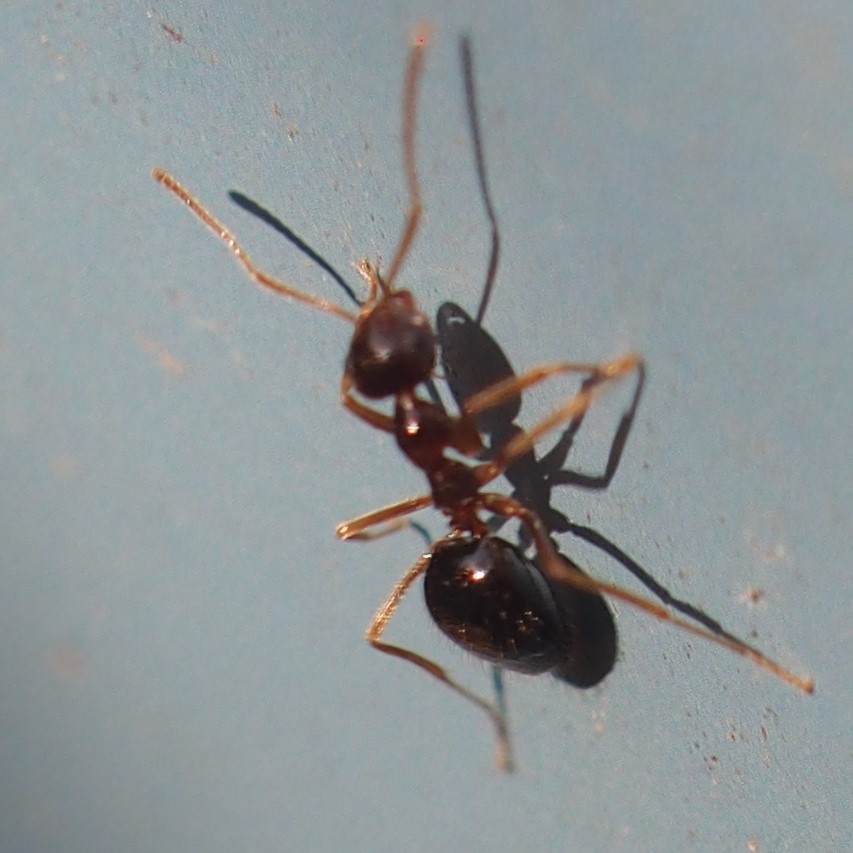
Remember that there is information in the name of the file for each image. You can see it by mousing over the image - look at the lower left of the screen. Or you can click on the image to get to the (usually) larger image. Then the info is displayed in the address line above. Sometimes the second click will actually display a different view of the original image.
Various creatures live in cases of their own construction. I tend to call them all "Bagworms" because that's what we called them all when I was little. This first one only has the tip of its head sticking out the top of its case, but the next one has several segments out.

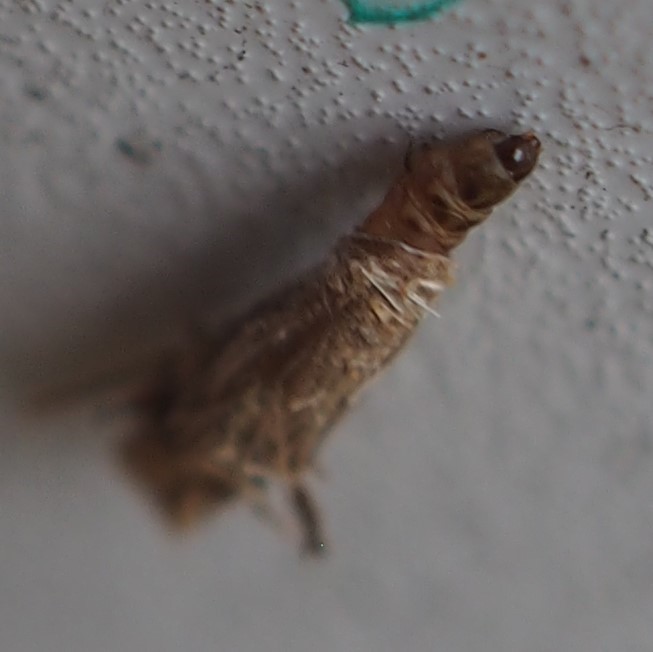
I don't think I saw a single Bee anywhere this past week. But we did have a few Beetles. Here was a very little one walking very fast over the East Wall. Next is a Rove Beetle, and third is our old friend the Redbud Bruchid. (I haven't reminded you in a long time that a Bruchid is a little Weevil that lives on the seeds of Leguminous plants (reminder: The Redbud is a Legume just like a Bean or Pea Plant!), eating the seeds from the inside of the pods.

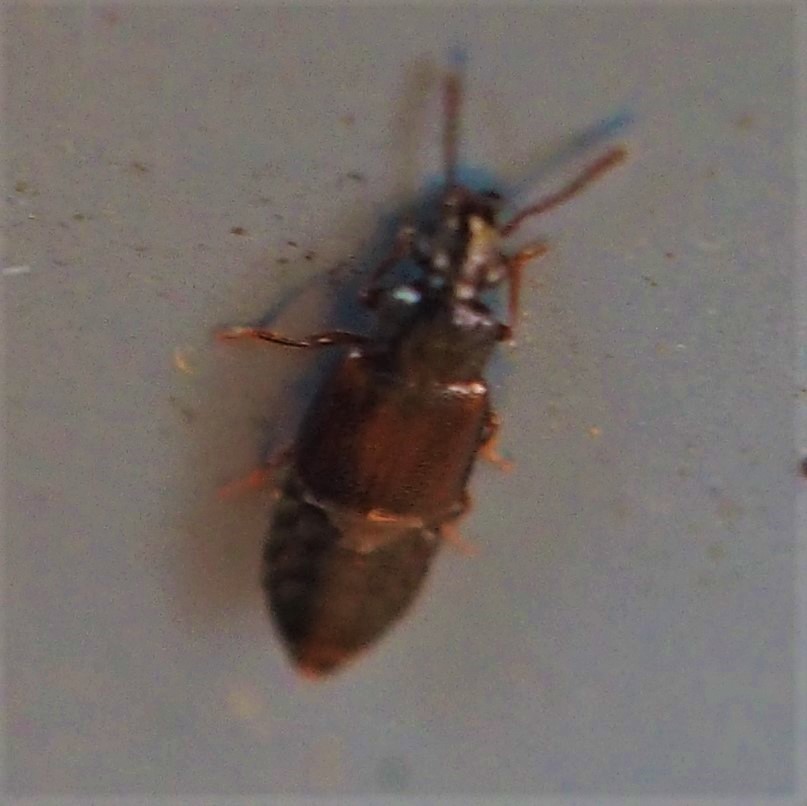
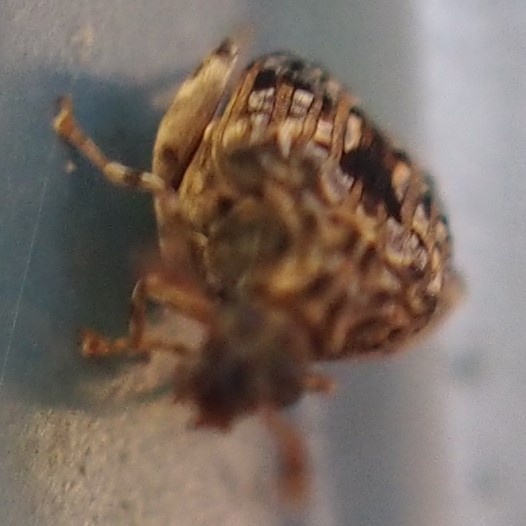
Our Bugs were a bit more in evidence this week than our Beetles. In fact, we saw both kinds of Zelus Assassin Bug nymphs. First is Zelus tetracanthus (the four-spurred Assassin Bug). While i was trying to focus on it, it dropped to the ground, where it showed up a bit more against the yellowish leaves down there. Just around the corner was a yellowish Zelus viridis one. How odd to have been able to see these three colors, all Assassin Bug nymphs, within such a short distance from one to the other! One way to tell these two kinds of Assassin Bugs apart is to remind yourself that only the greenish species has the bright red eye color. The others have brownish eyes!
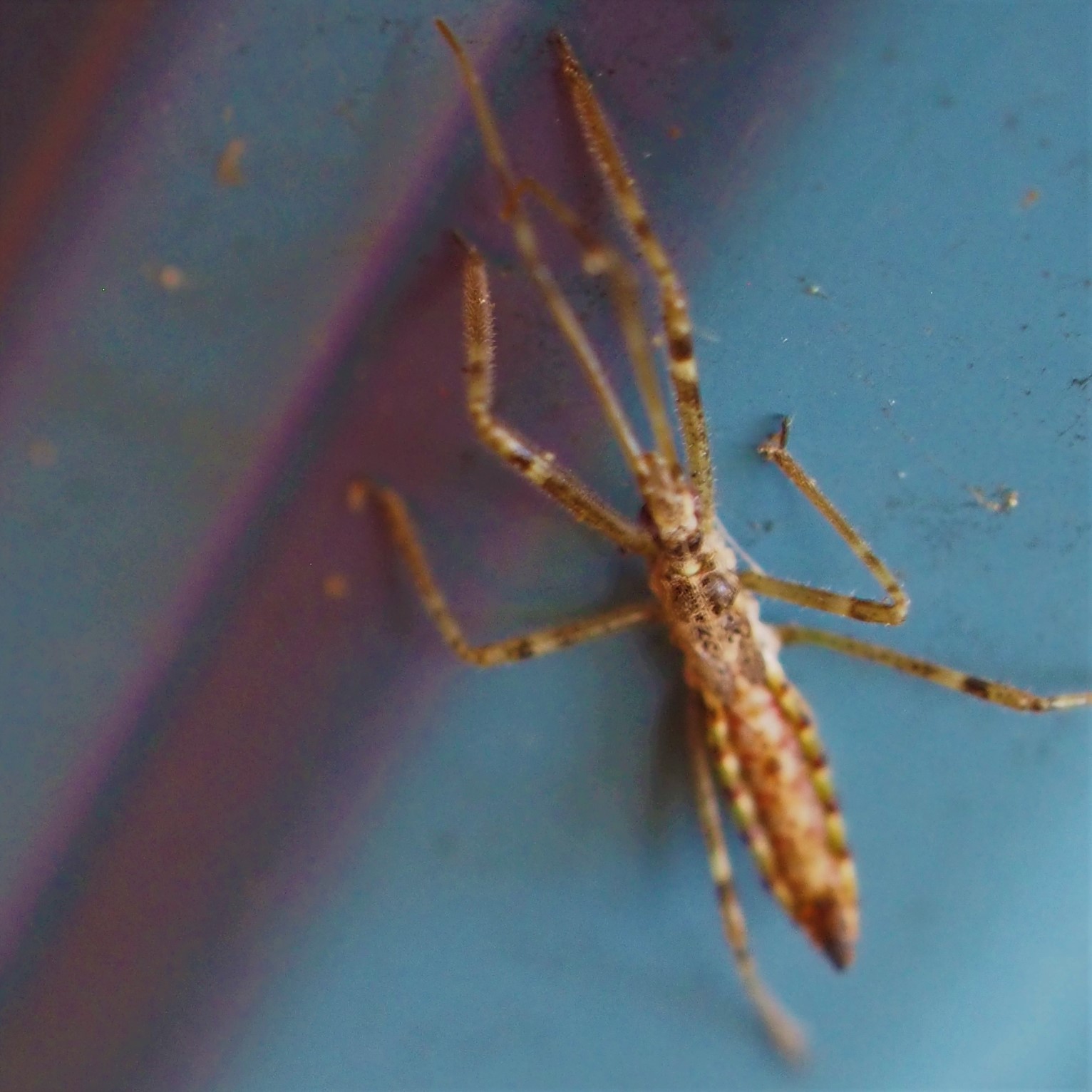
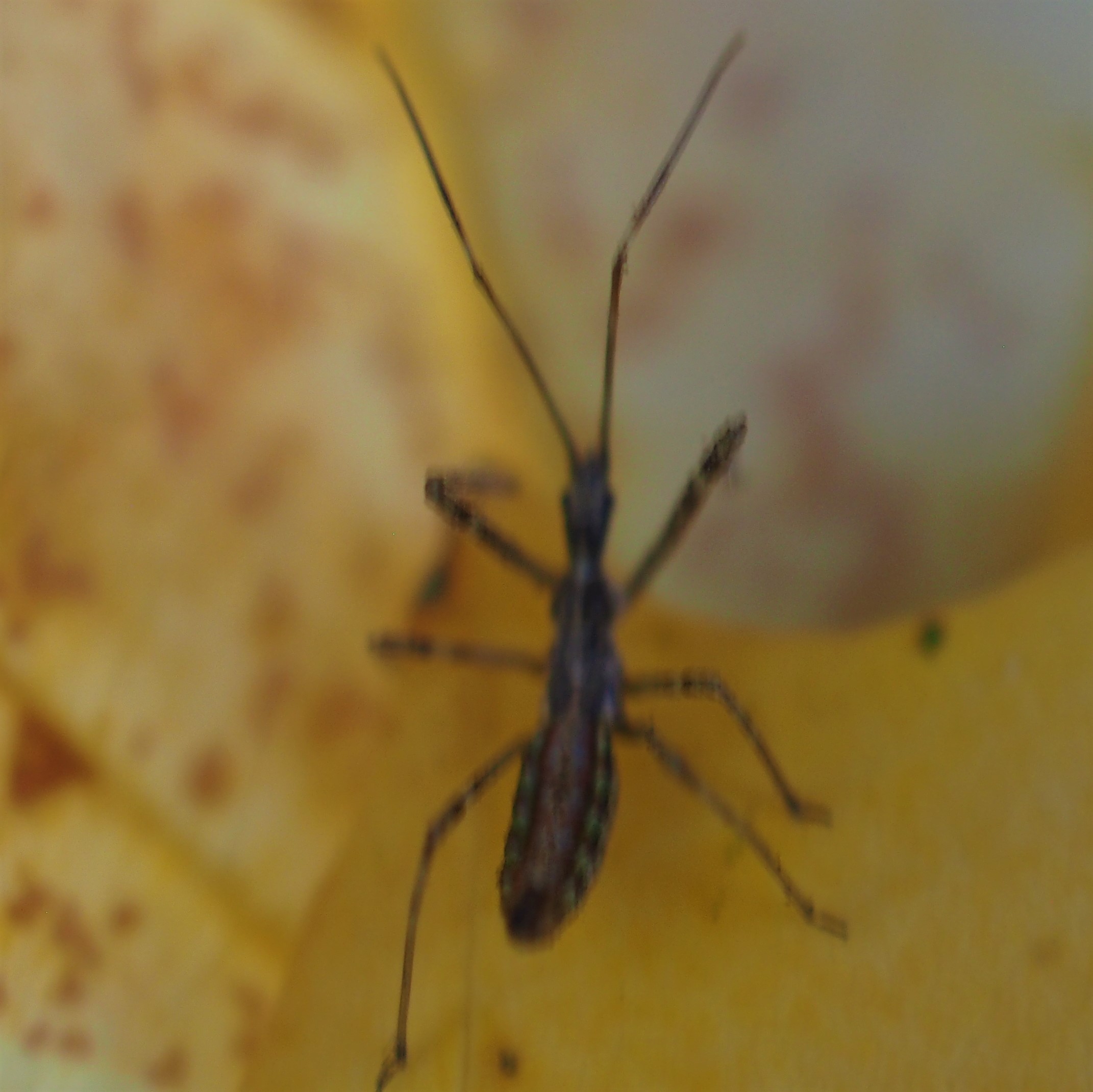
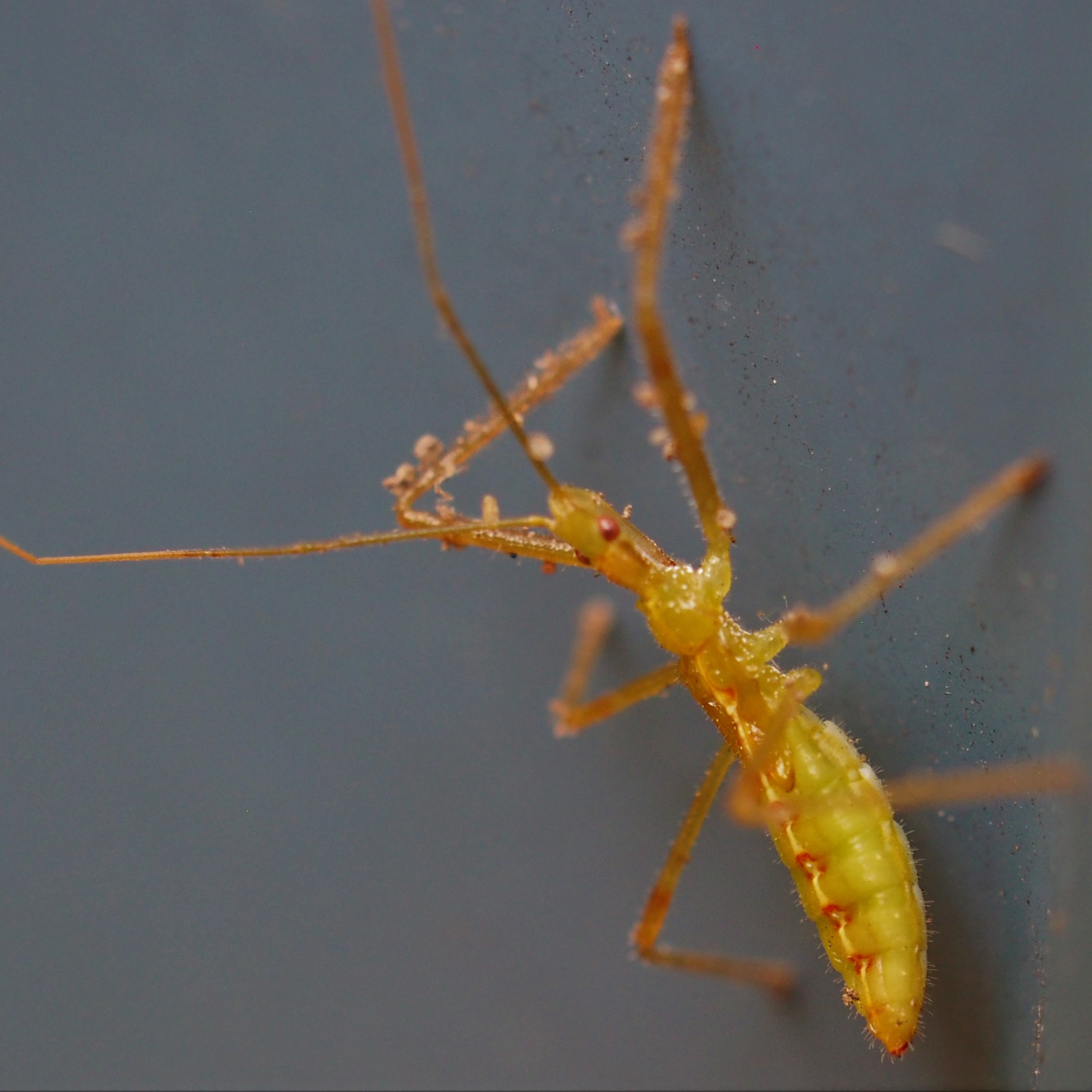
You might be asking, for I know I was, why are we suddenly seeing so many tiny Assassin Bug nymphs just as it is getting cold? All I can think is, they probably have time to mature to adults in time to overwinter as adults. Or maybe they find a warm spot to sleep it out as nymphs? Certainly many other creatures make their homes underneath the woodshop. Well, we also have another nice adult Assassin, the Damsel Bug, and it is now in the adult stage. I wasn't able to get a wonderful picture of this one, but here is another closely related species (Nabis americoferus) from fall of 2016.
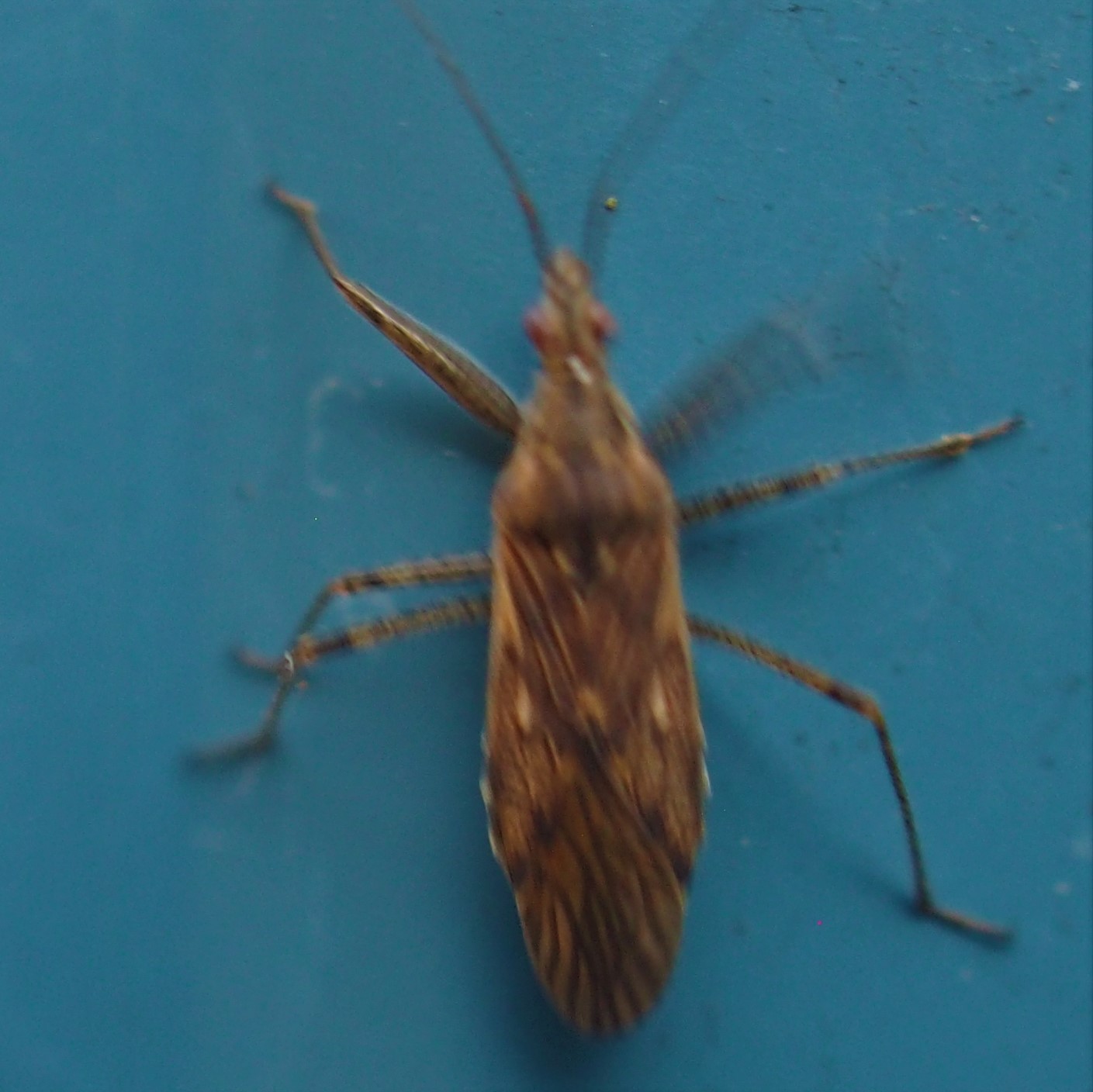
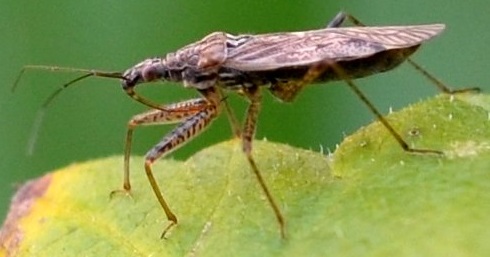
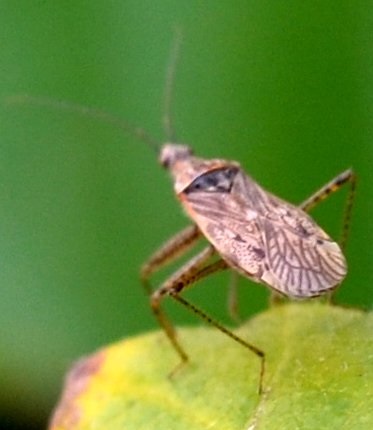
The Goldenrod is no longer golden, so the Drymus unus Bugs haven't been seen mating for a few days now. Singletons can be found though, mostly walking on the shop door.
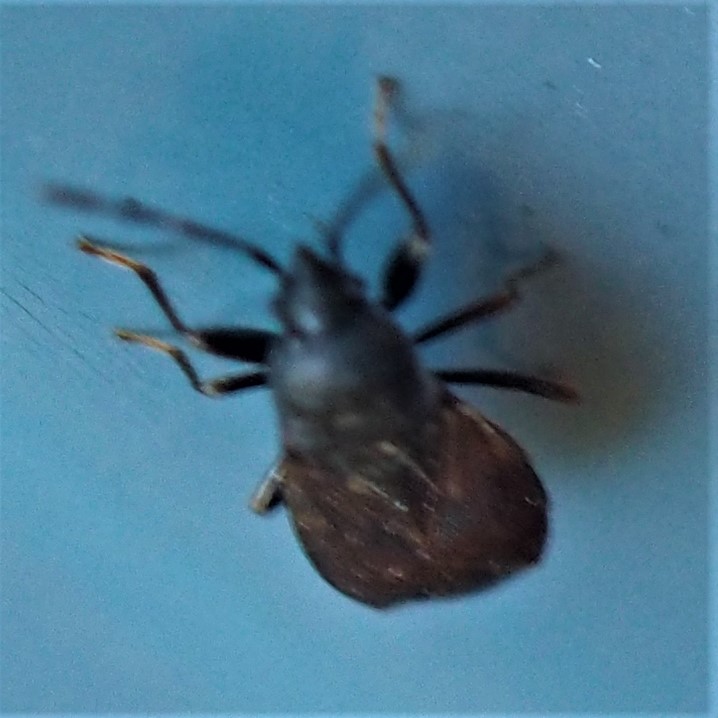
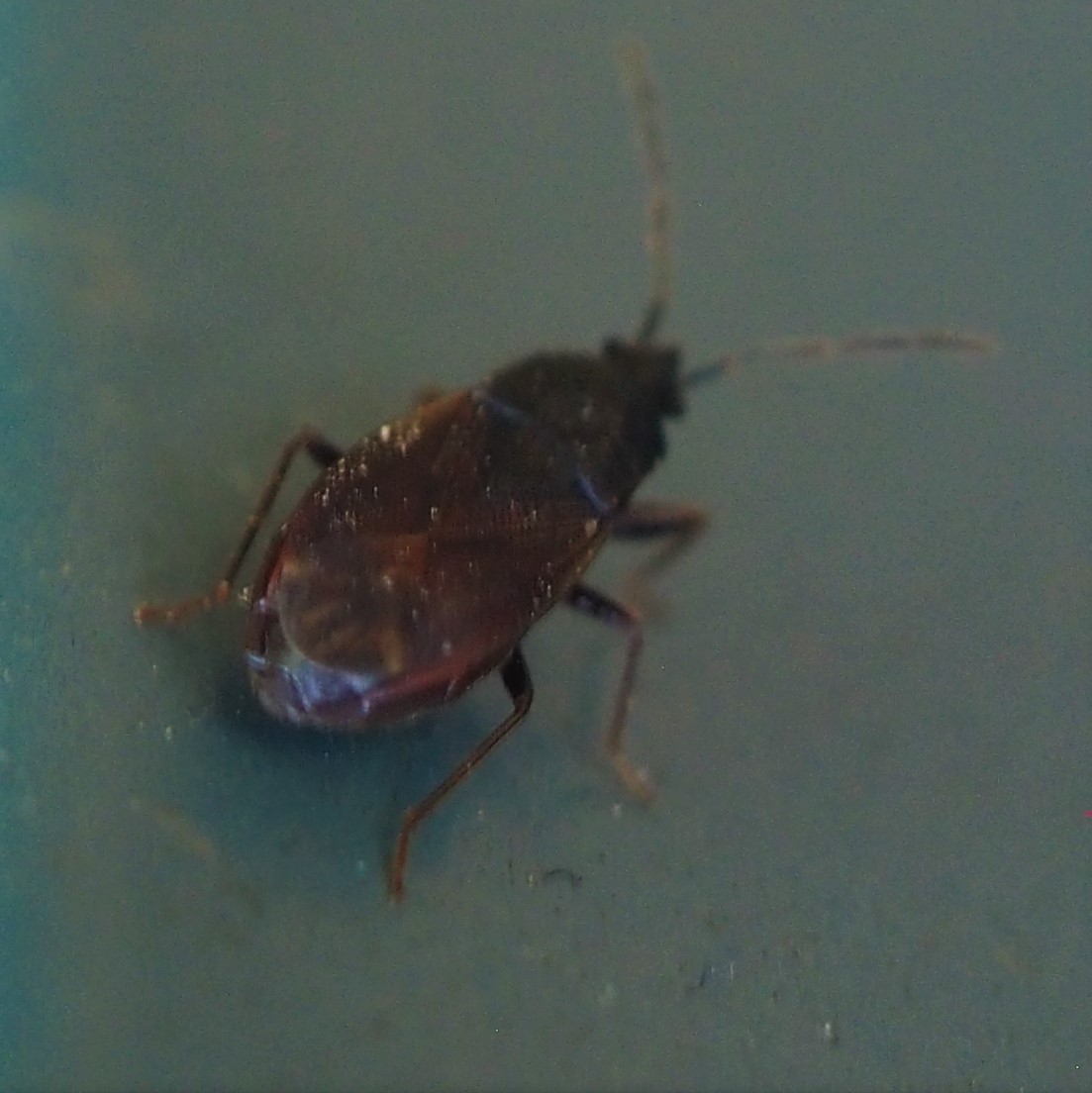
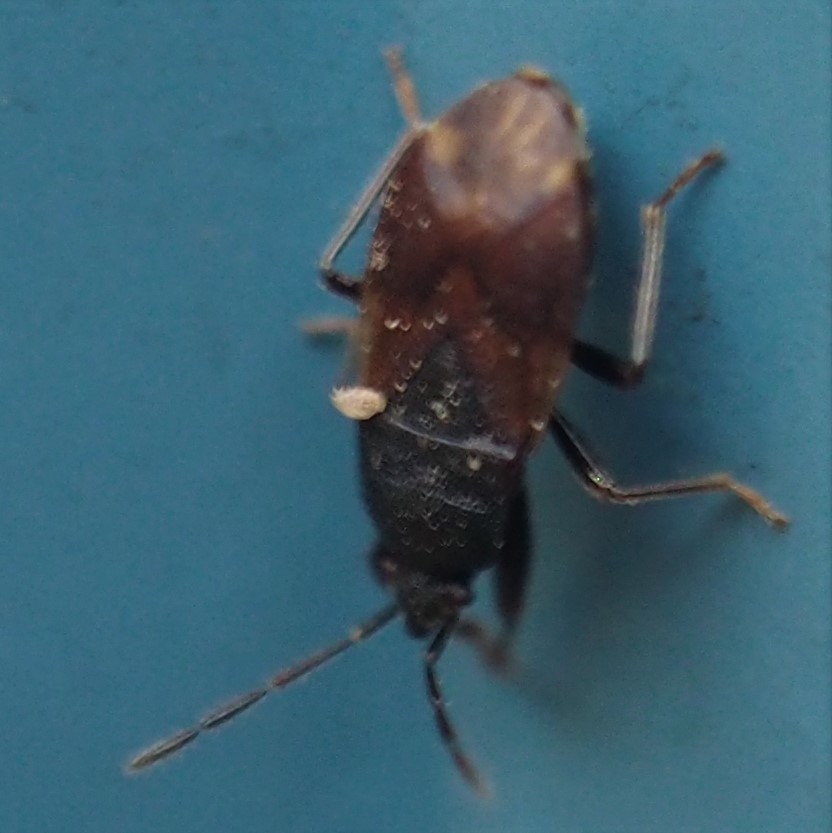
We have a few other Bugs. One of the most visible is the Eastern Boxelder Bug. But we also have our old favorites, the Lygus Plant Bugs, and that old standby, the Brown Marmorated (marbled) Stink Bug.
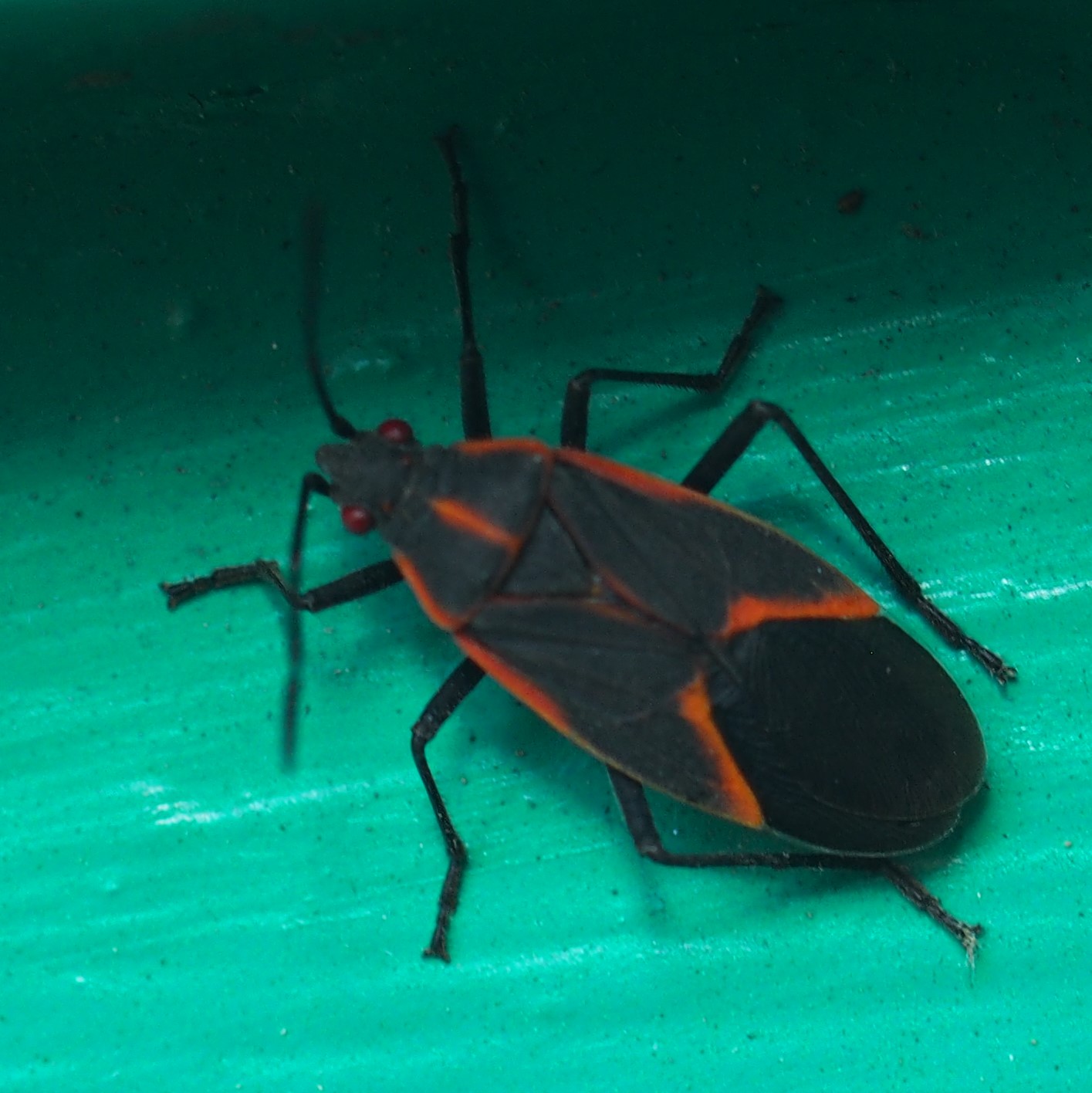


The whole season I didn't see so many Leafhoppers, but now they are beginning to show themselves. I didn't see the Red-banded one that was common in weeks past. But genera like Eratoneura have gifted us with these three - I don't know the species name for the first one, but the variation in picture 2 is E. ardens. The third is one of the "dots" variations on Eratoneura.
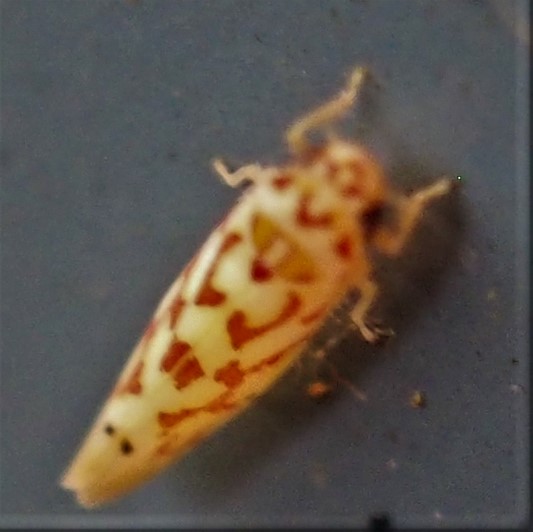
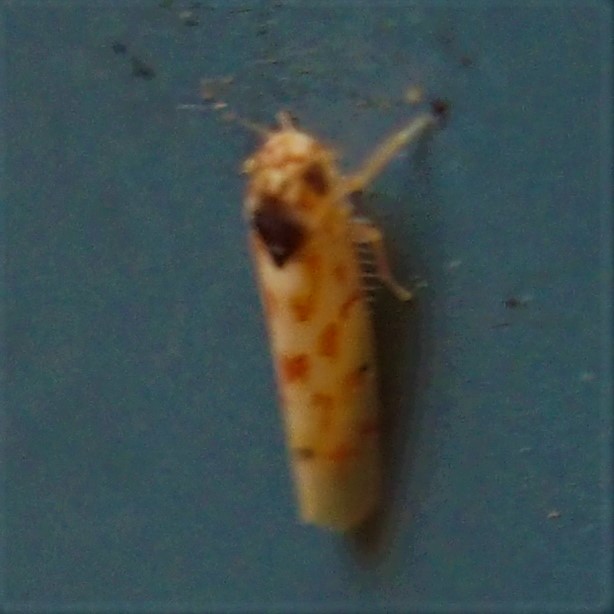
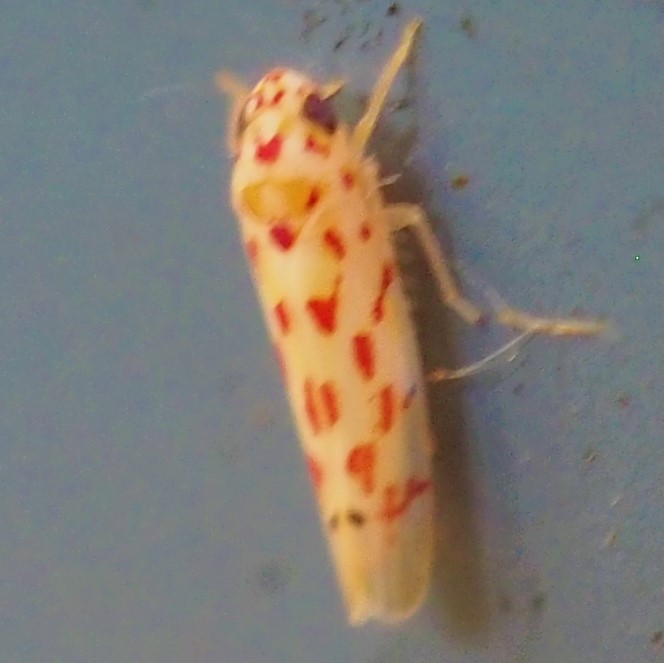
The Erythridula genus has many variations, most of which I don't know. The patterns tend to branch away from the center line. Here are three kinds.
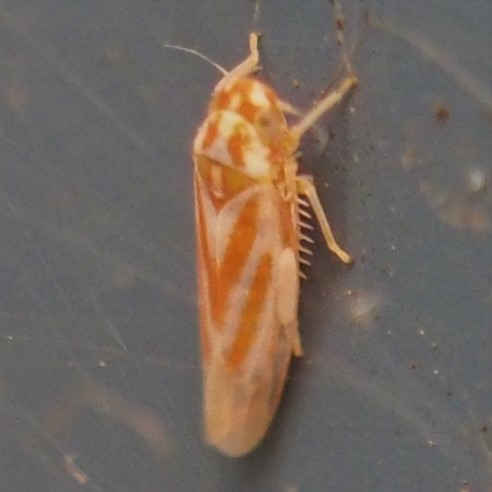
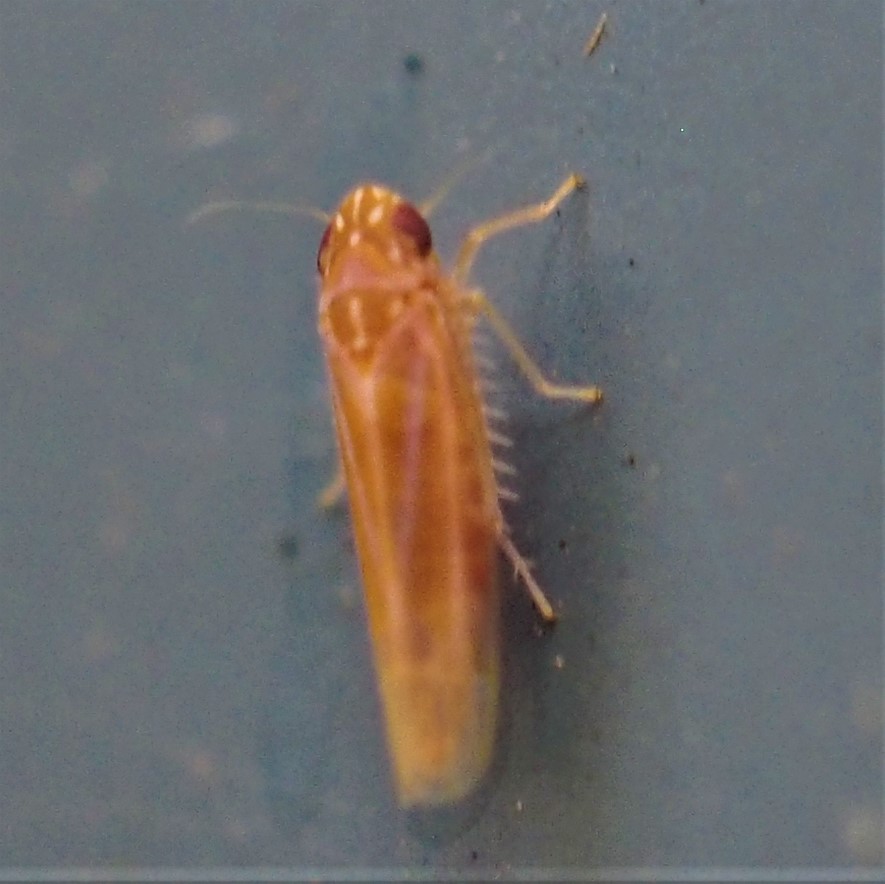

Genus Erythroneura is represented here by E. infuscata (no common name) and E. vitis (the Grapevine Leafhopper). This third bright green white-eyed Leafhopper is in a different genus, maybe Empoasca.
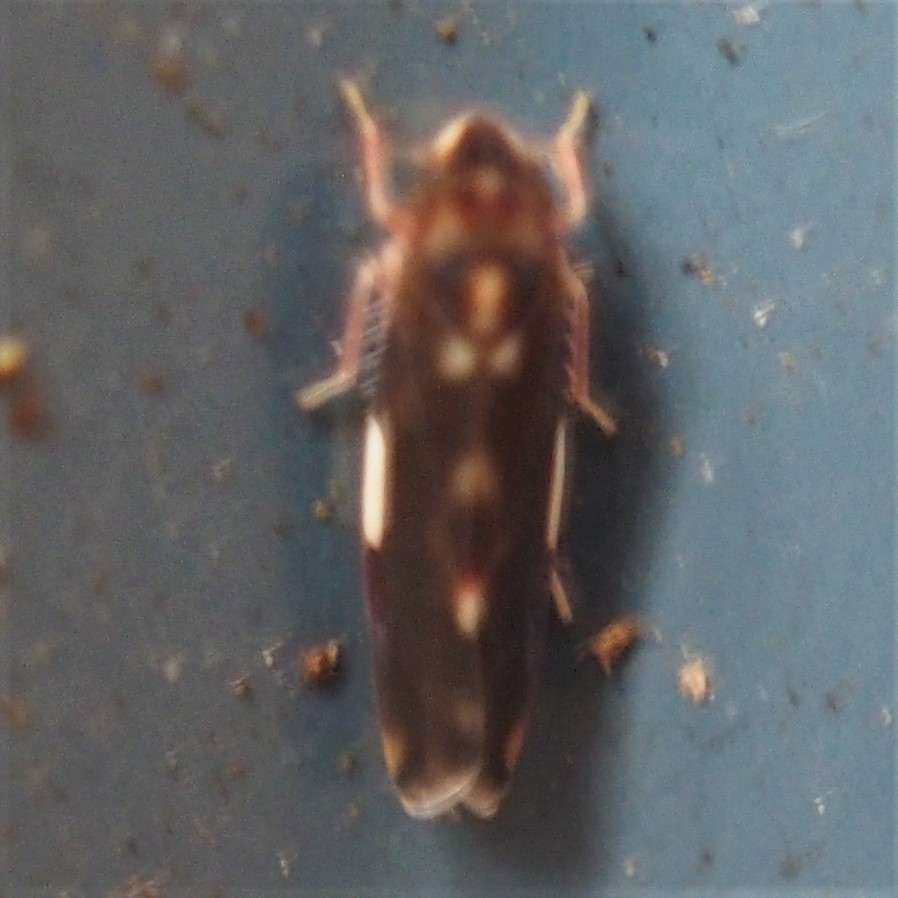
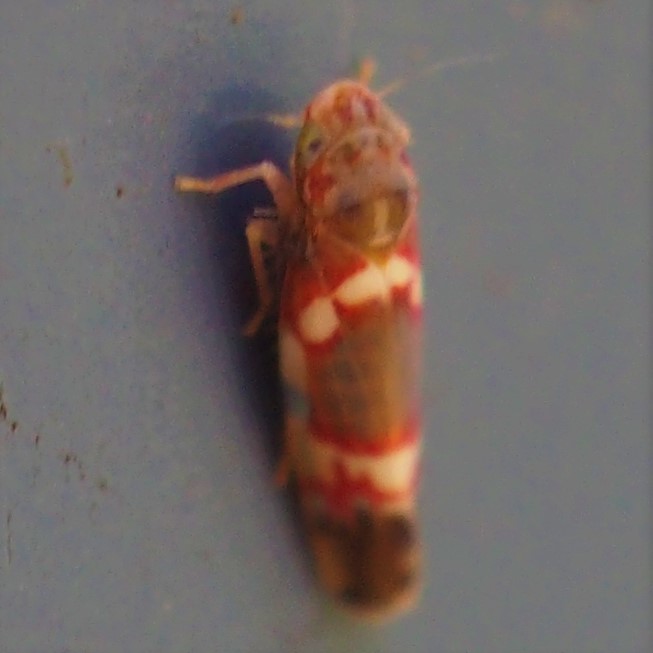
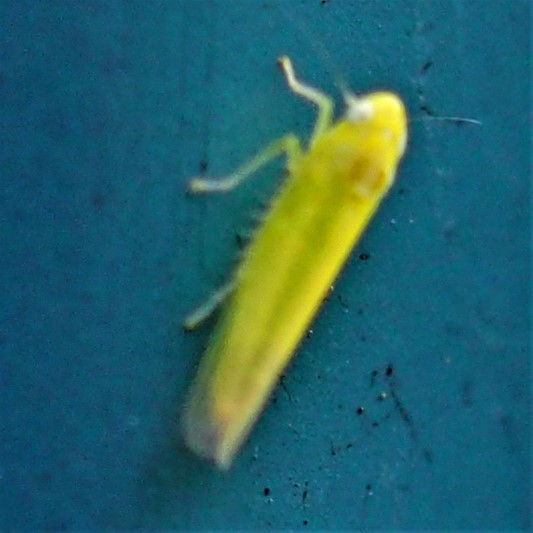
We've fairly often seen Erasmoneura vulnerata, as in picture 1. But I'd never seen the blackish variation on it before. It turns out to be a less-commonly seen species, E. fulmina. That was a treat!
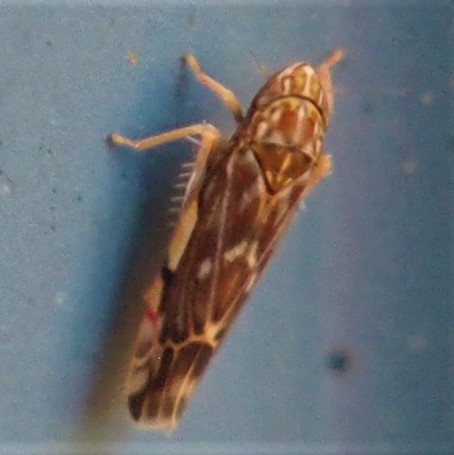
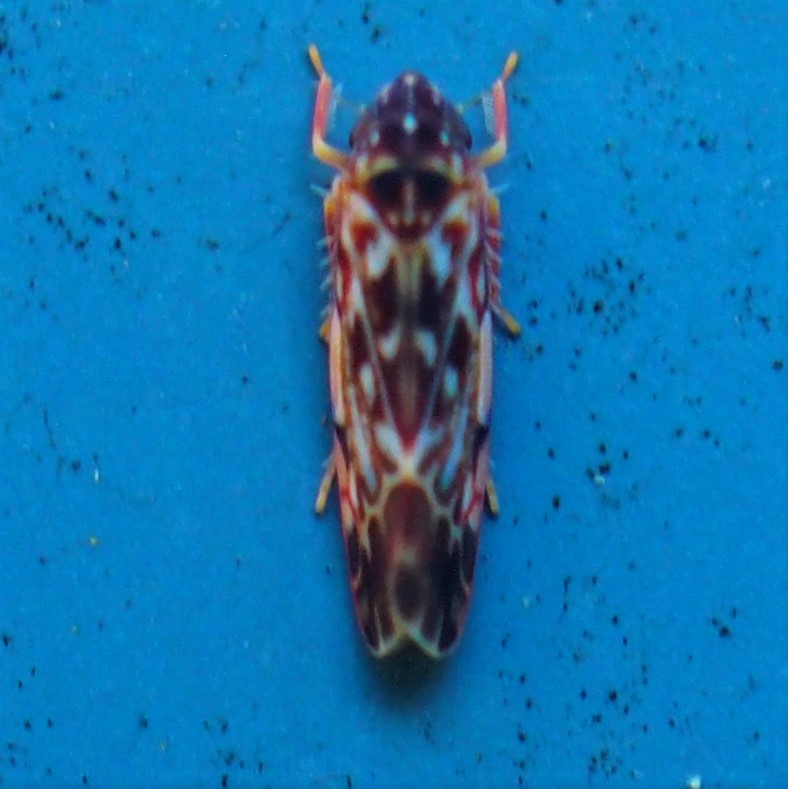
Two more Leafhoppers, the first two images probably of genus Agallia. I think of them as looking somewhat Froglike. You can see from the short wings that this one is an early instar nymph. Usually mine turn out to be the Four-spotted Clover Leafhopper, Agallia quadripunctata. Third here is the Coppery Leafhopper, Jikradia olitoria.
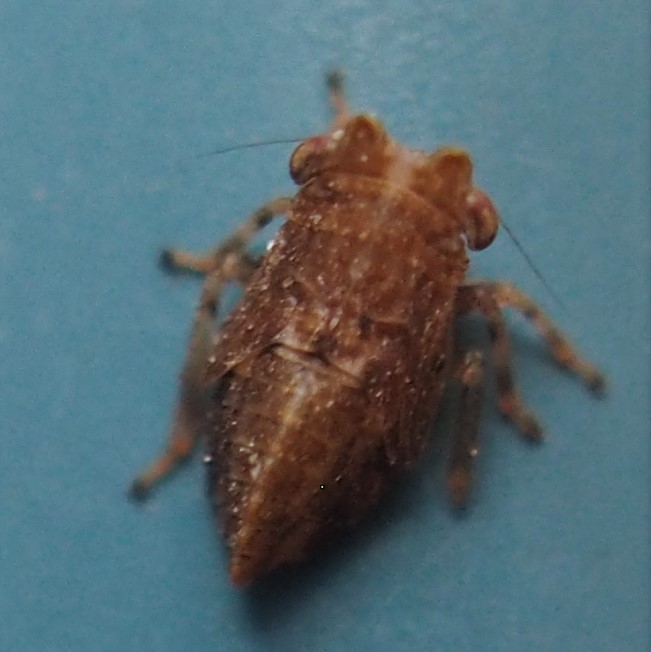

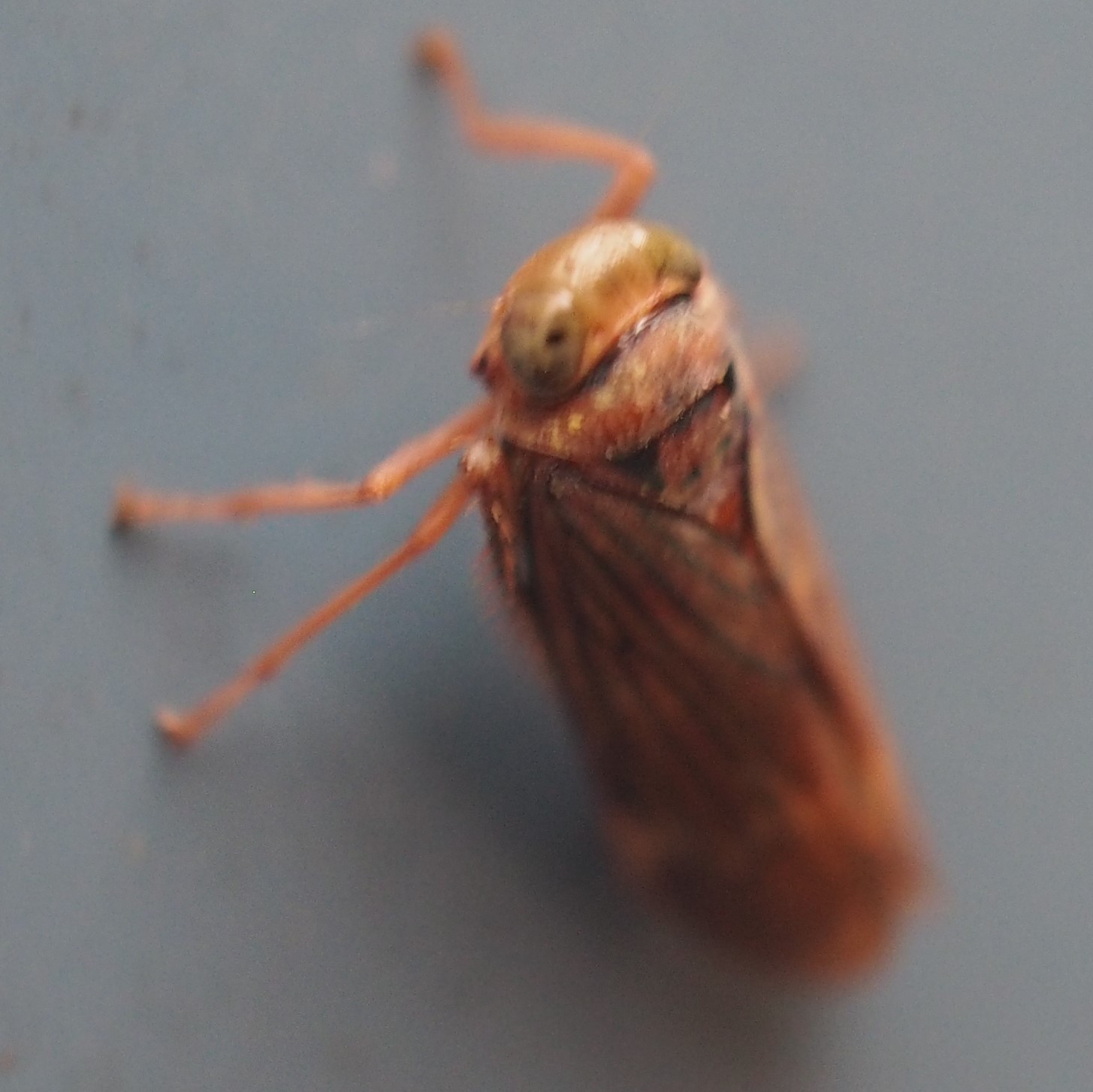
Let's check out what is left on the Wall of Barklice. The Graphopsocus cruciatus were the most plentiful I've seen in ages. Especially on the South Wall, where you can find them in twos and threes all over the place. With your naked eyes you will see golden sparkles on black. They are capable of running quite fast.
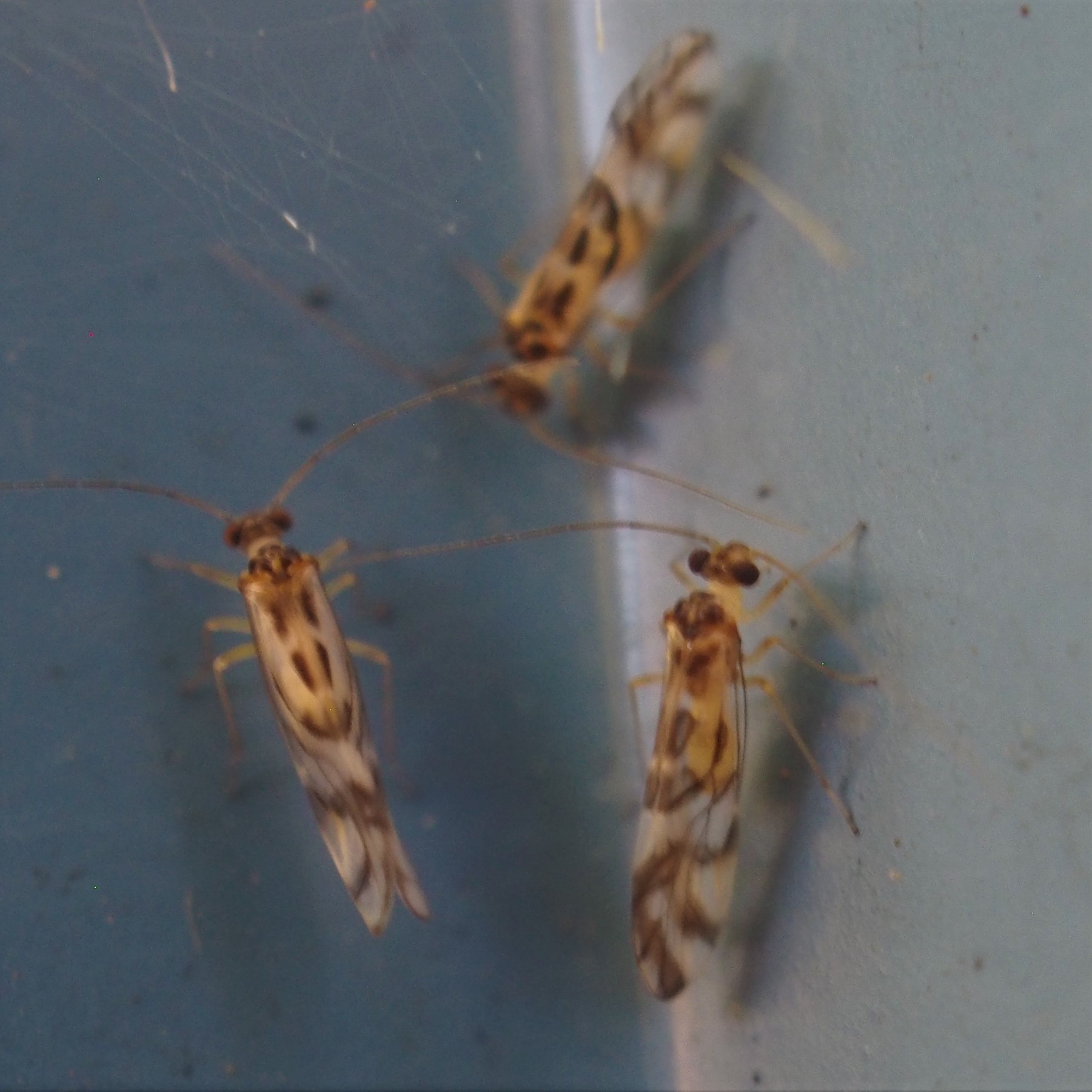
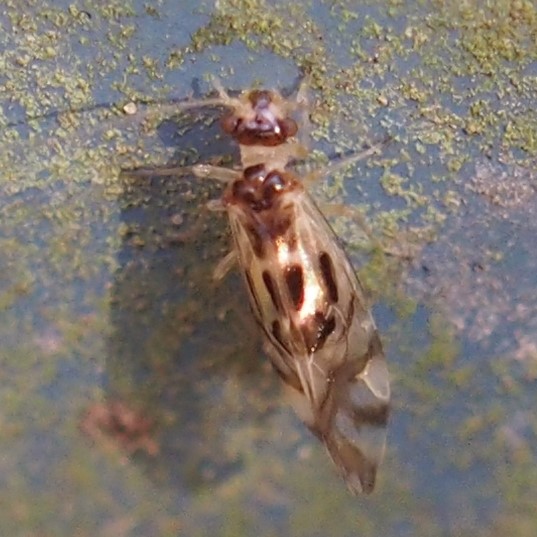

Those shaggy Echmepteryx hageni are still awake, but many fewer than before. Here's one. Second is an adult Metylophorus novaescotiae. You can just make out the two dots on the back of the head in picture 2. Third is a Trichadenotecnum genus adult, but with a lot more light sections than I remember. I didn't see a single Polypsocus corruptus all week.

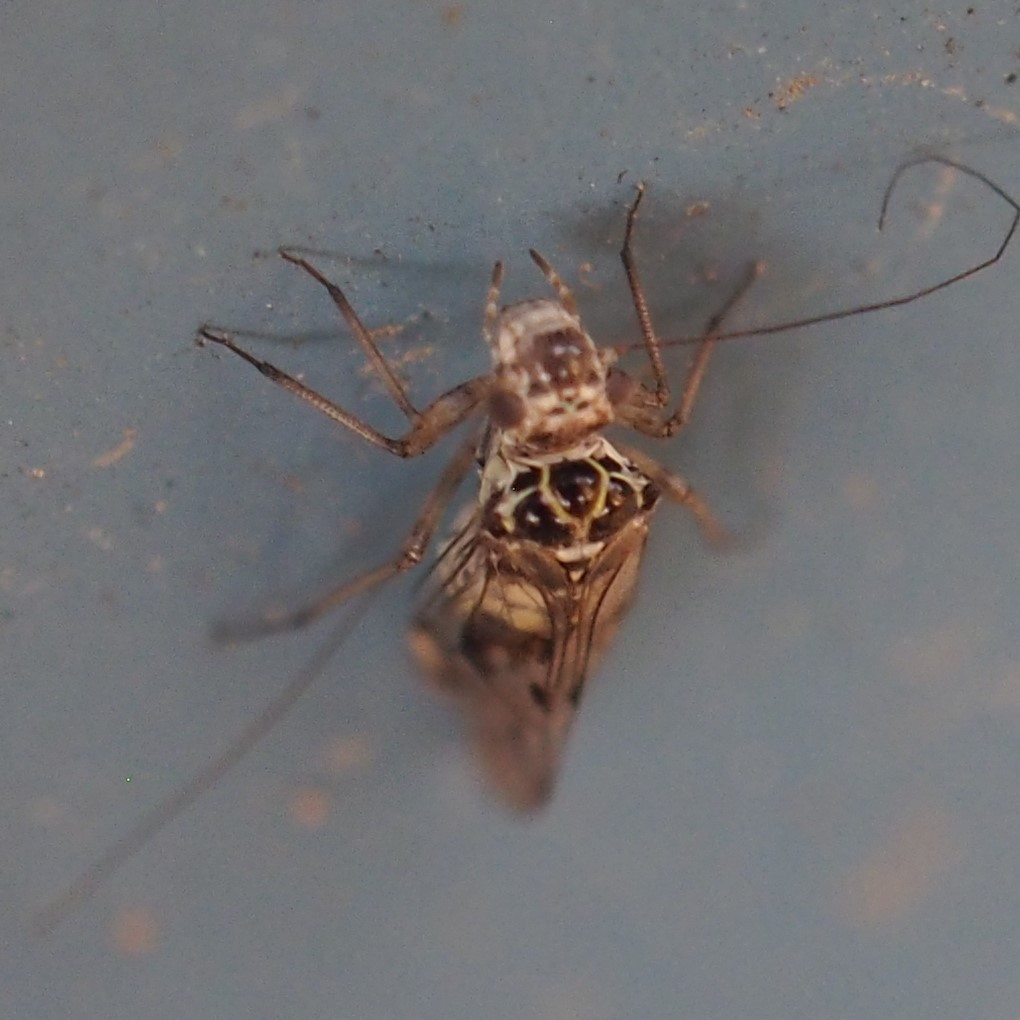

There were a few different-looking Crane Flies this week. The middle one is glistening with droplets from the constant rain showers. The third is on the window on the South side of the Woodshop.


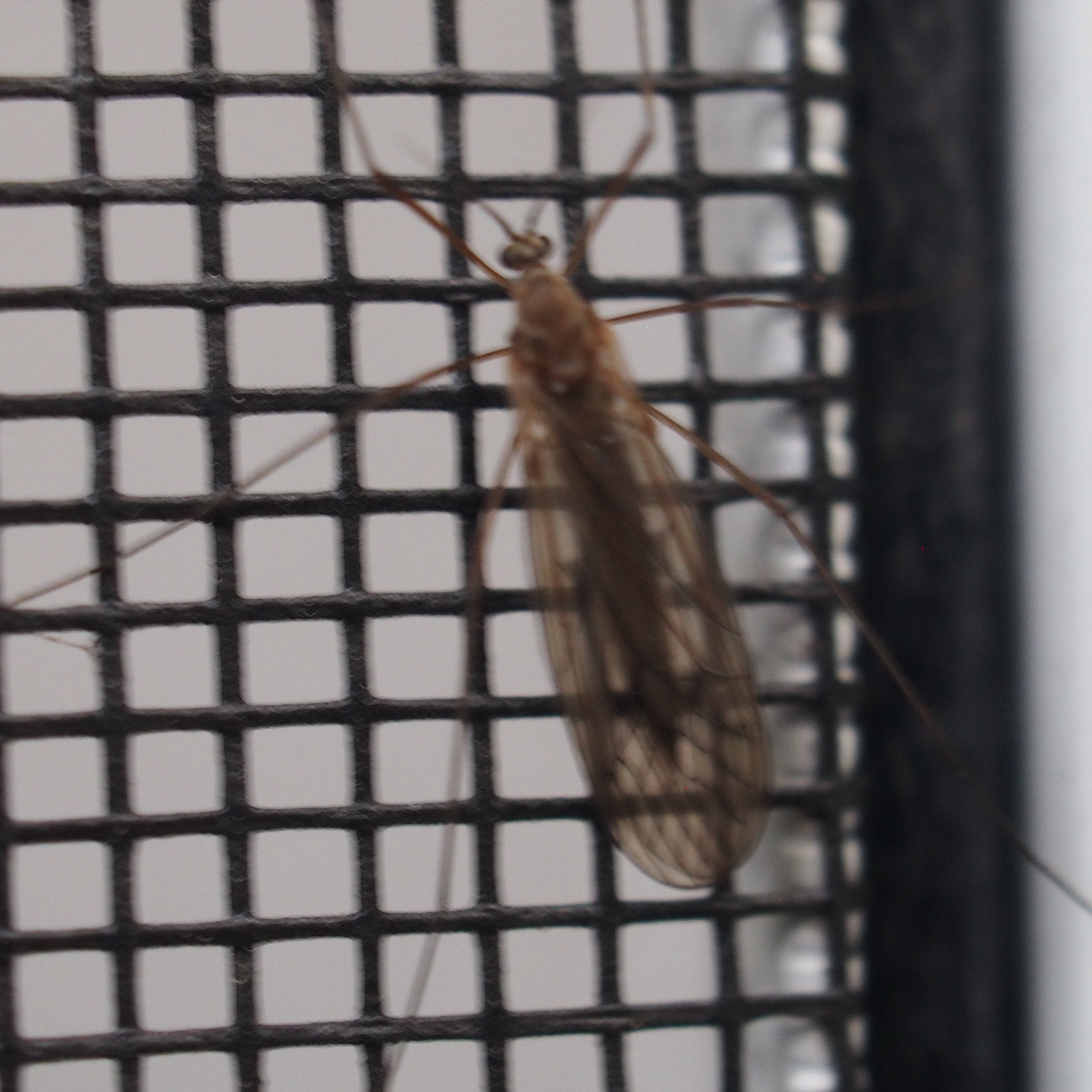
Here is a lovely Fungus Gnat (in my appropriately humble opinion). The second and third shots show the WIP in their wings.
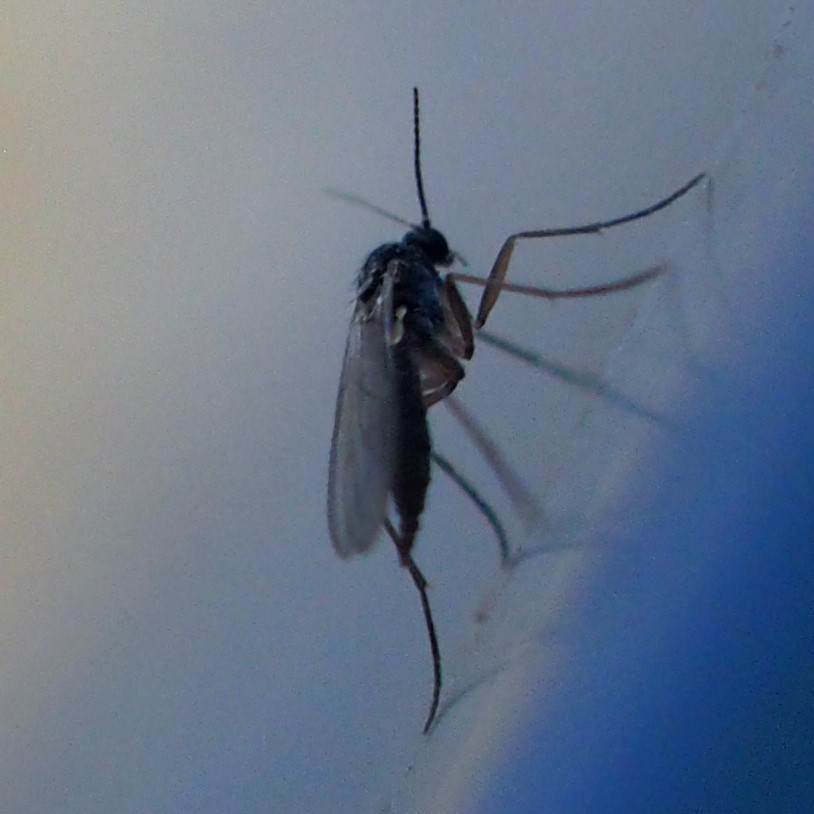
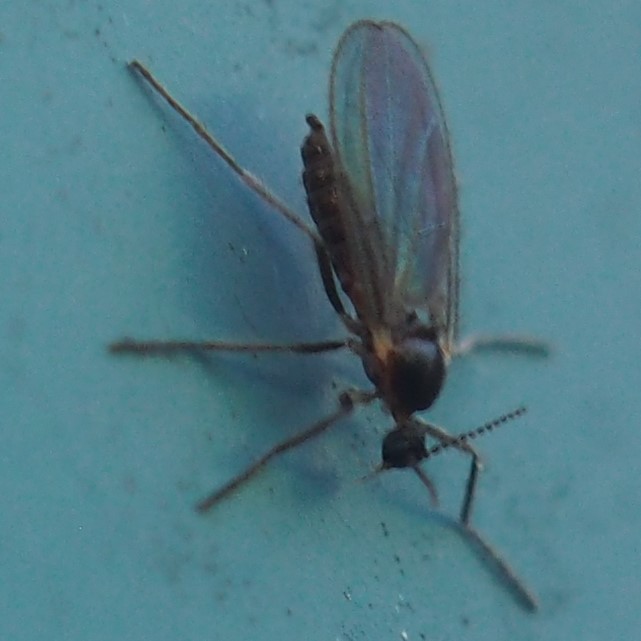
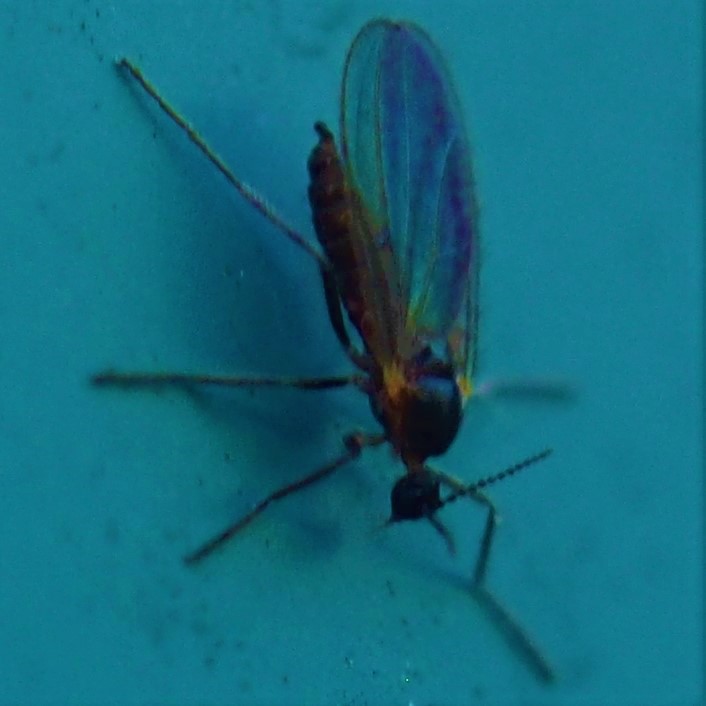
Here is a Brown Lacewing, Micromus posticus. The second one may also be M. posticus, but it looks darker to me. The third also looks red-brown, so you can see the variation in these tiny insects. I'm glad to see the Lacewings, even in November, since their appearance is in spite of the (seeming) loss of my Aphid colony.

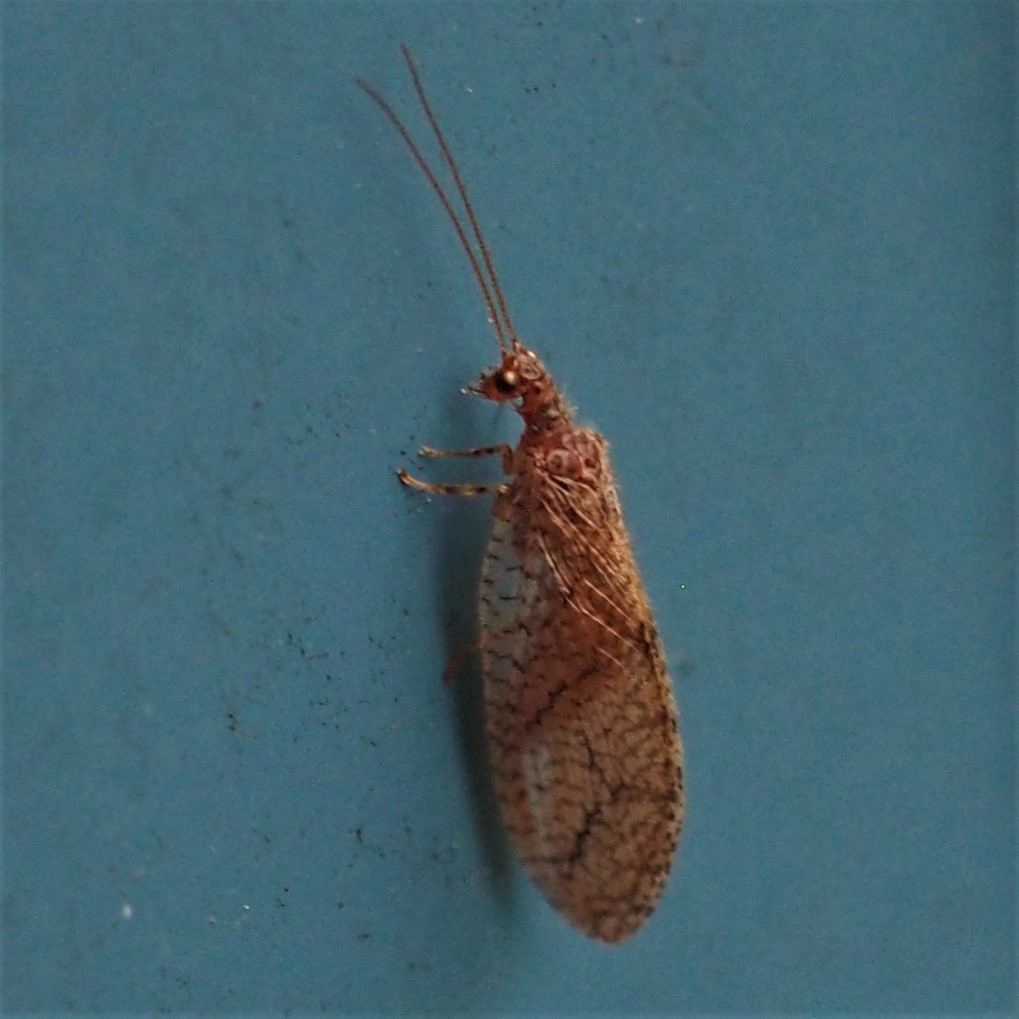
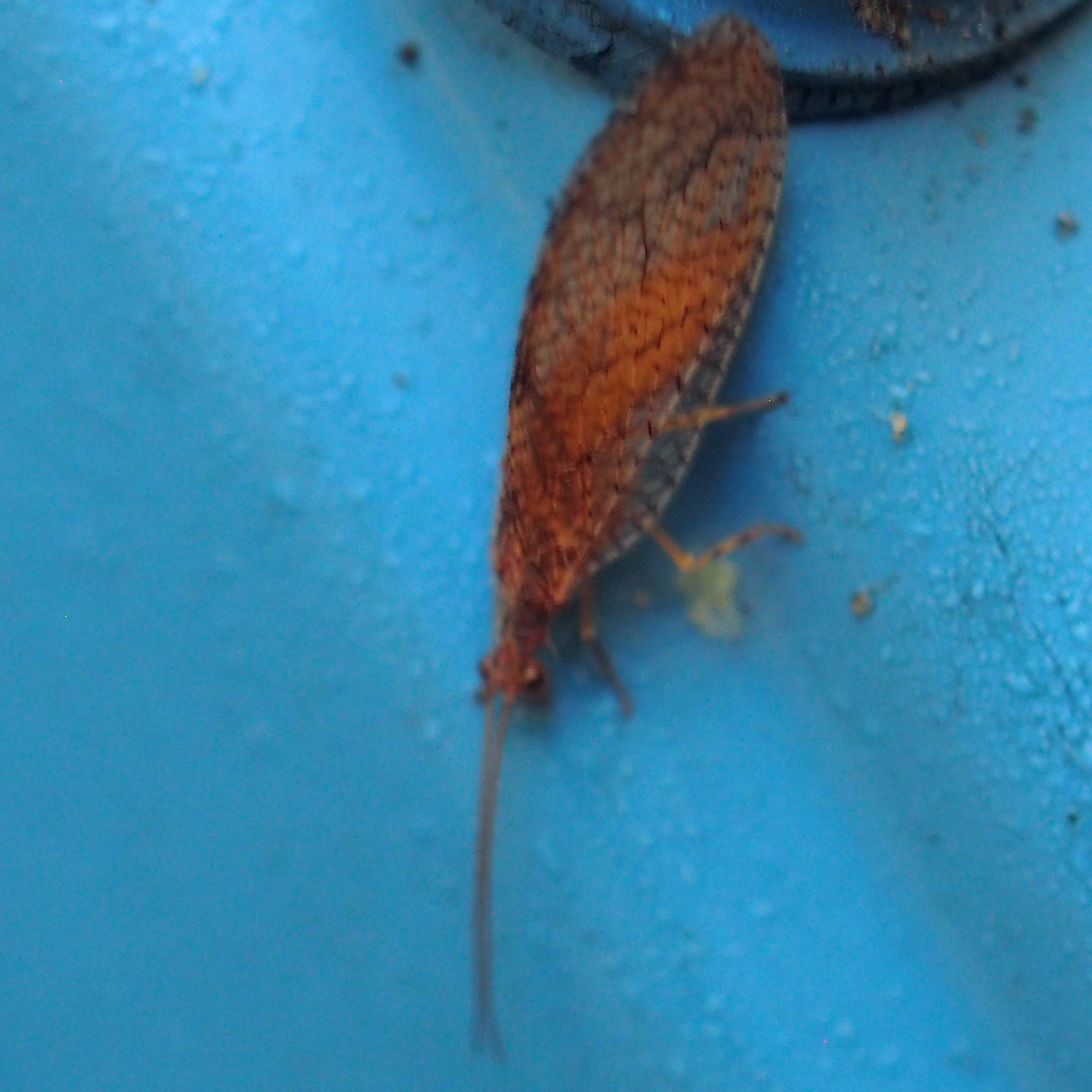
Here is another Looper. The first picture was taken a day earlier than the other two.
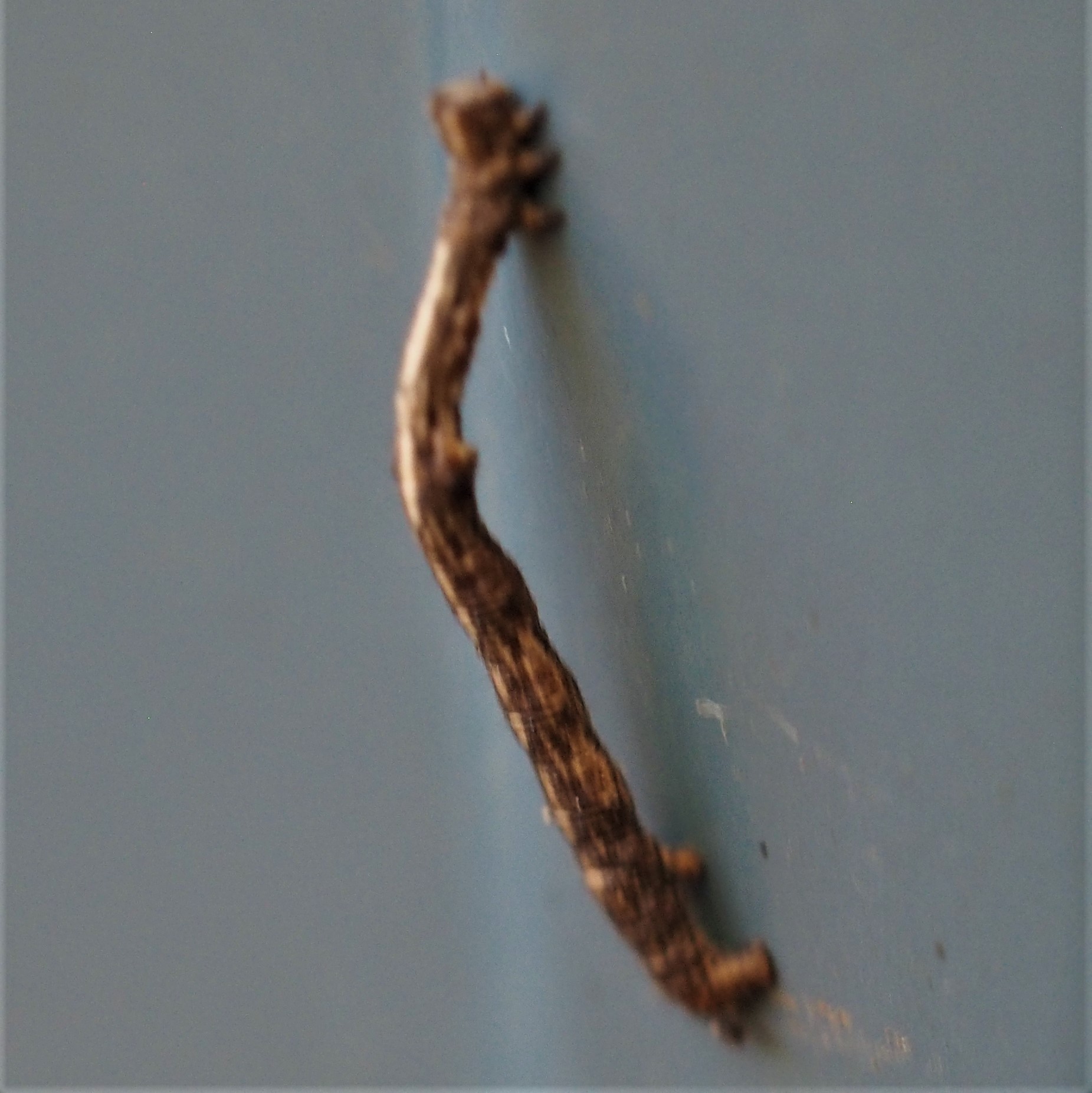

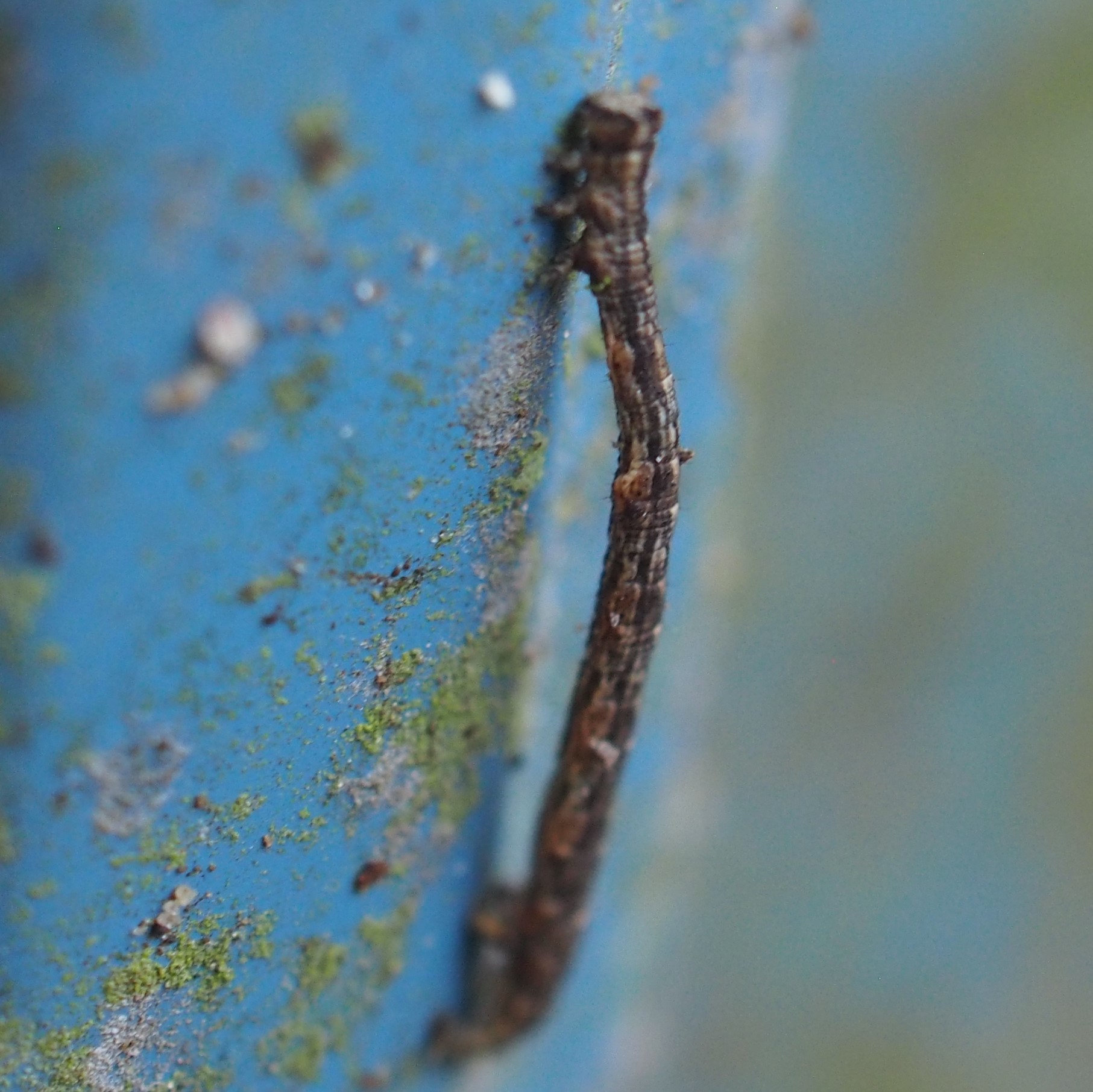
Color walk? Let's just suffice it to say that picture 1 here was of last week's Euonymus, while the second shows this week's seeds, which is all that remains of THAT pesky color.
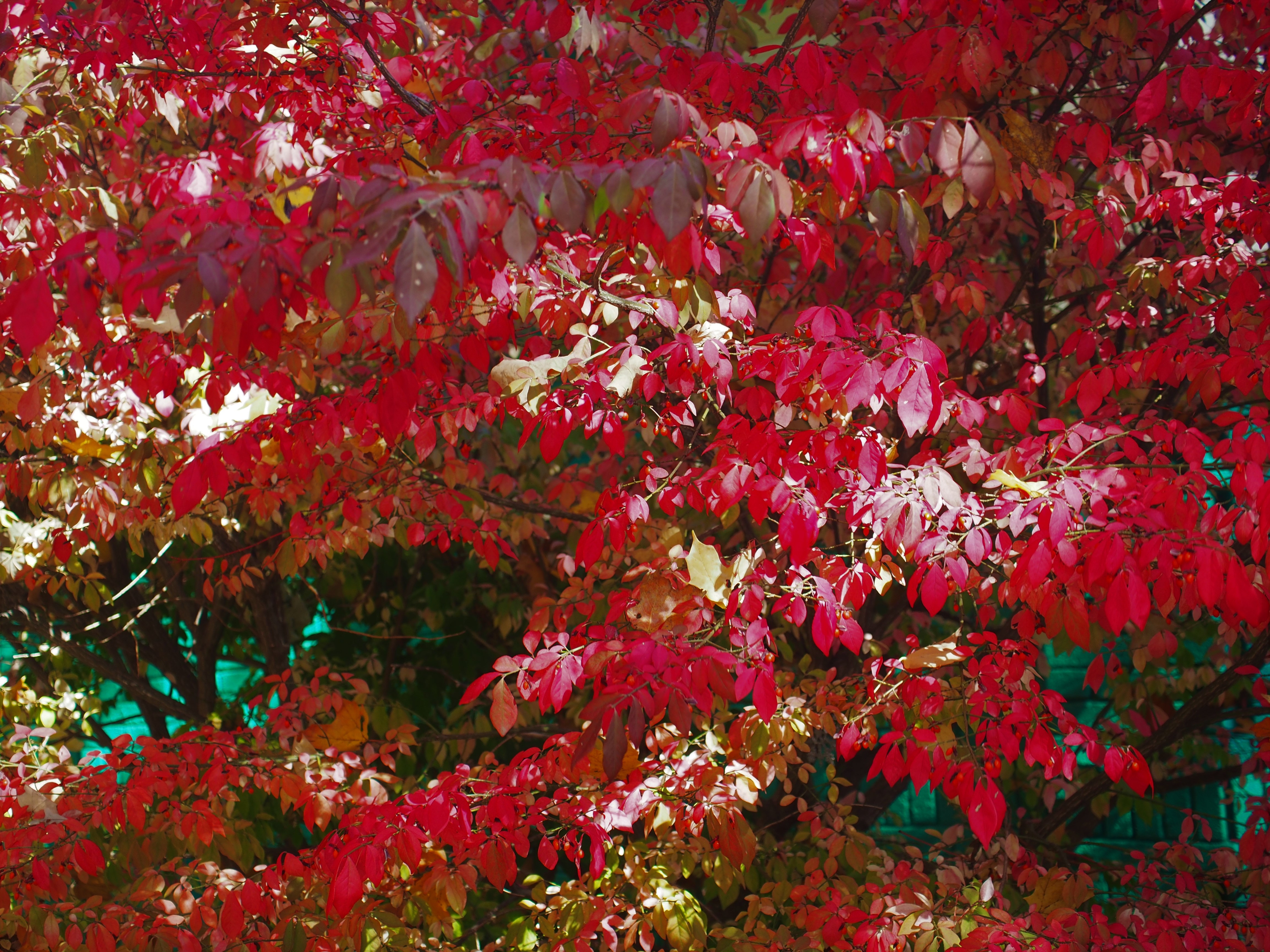
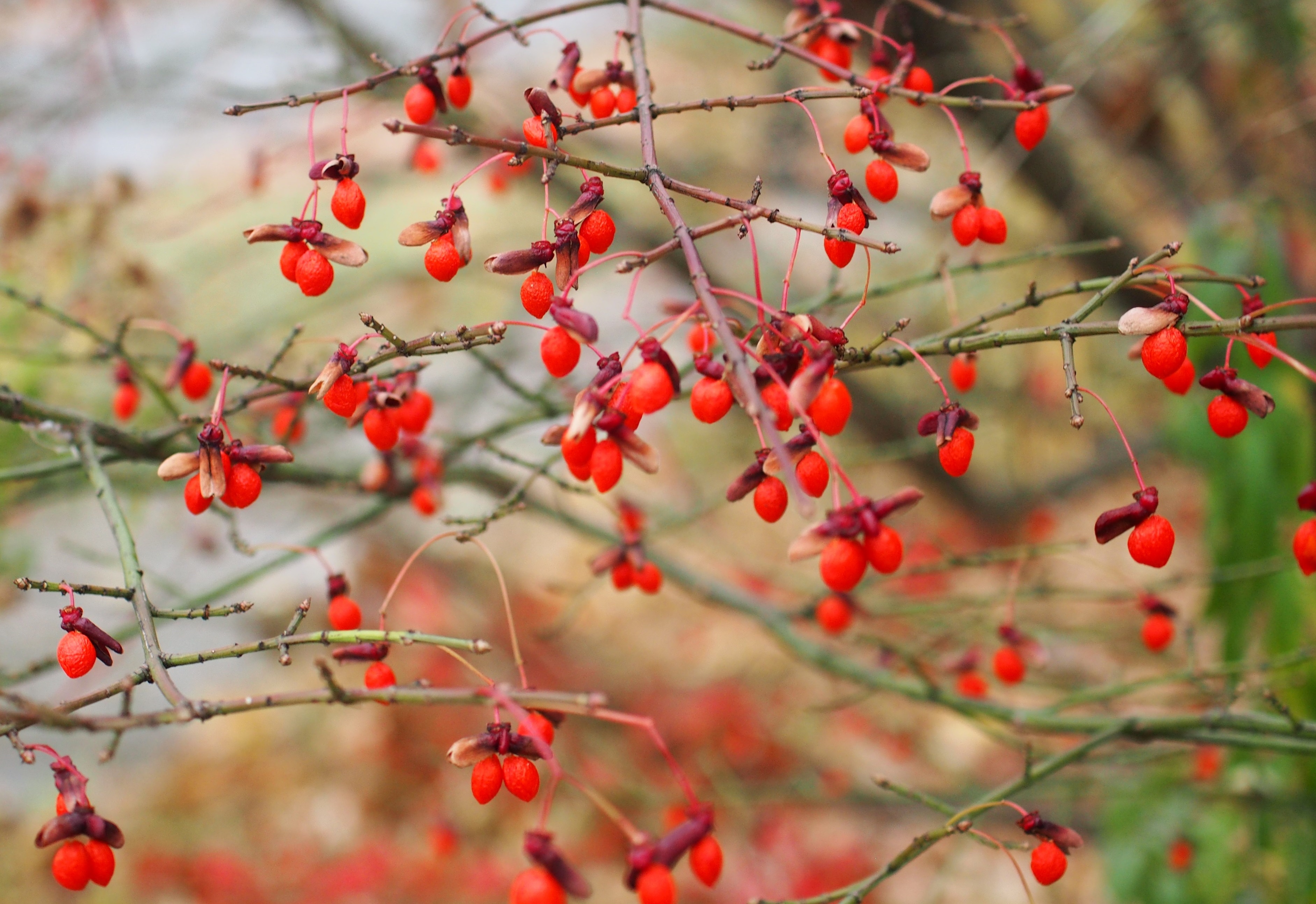
Which brings us to our Spider collection. Although it is not a Spider, it is the nearest relative to one.
It's an end-of-season Harvestman, most likely a young Eastern Harvestman. Next is that truly Common House Spider, which is something of a misnomer, because I do get Cellar Spiders in that fine Michigan basement, but haven't ever seen one of these in the house. Third is another of those Ant-mimic Sac Spiders.
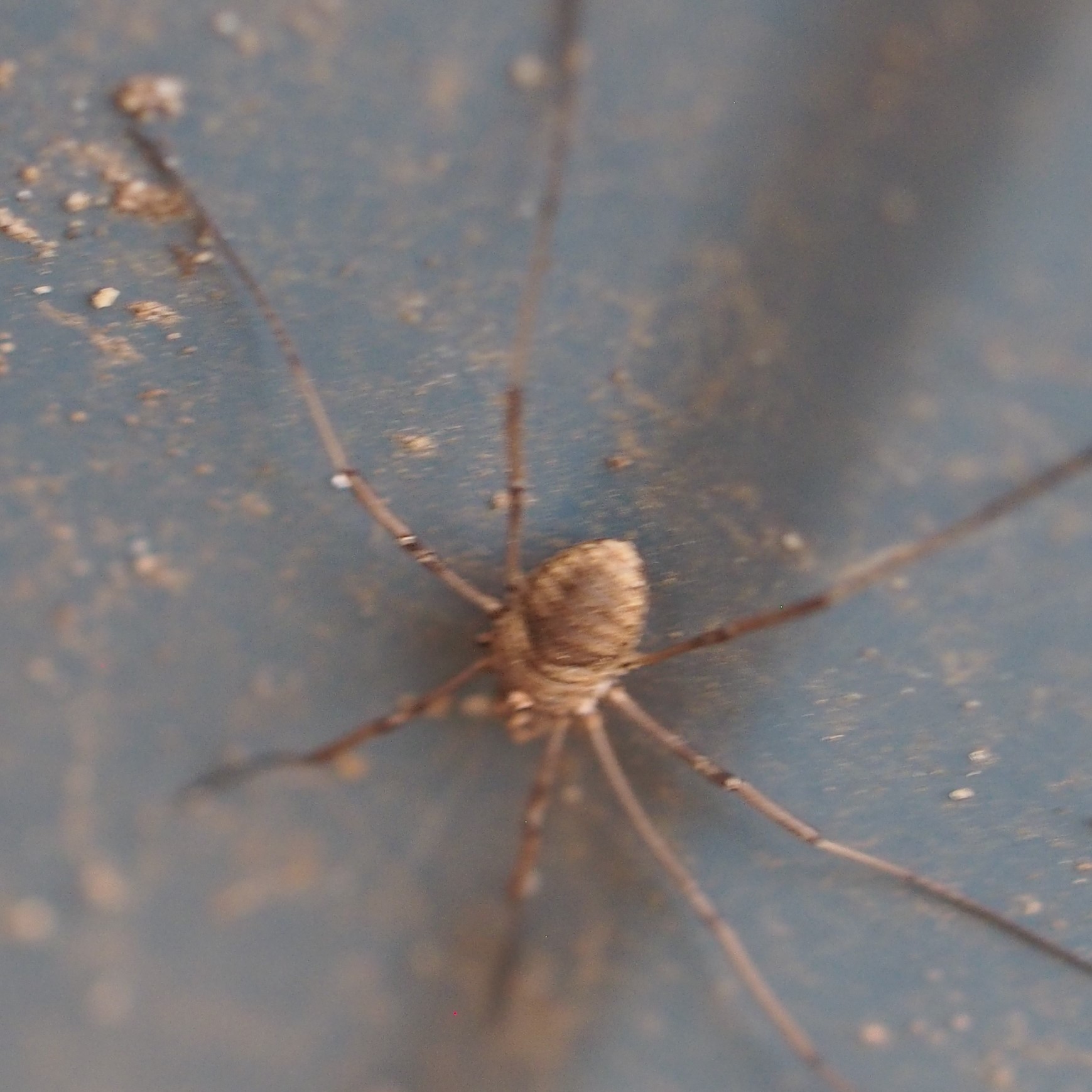
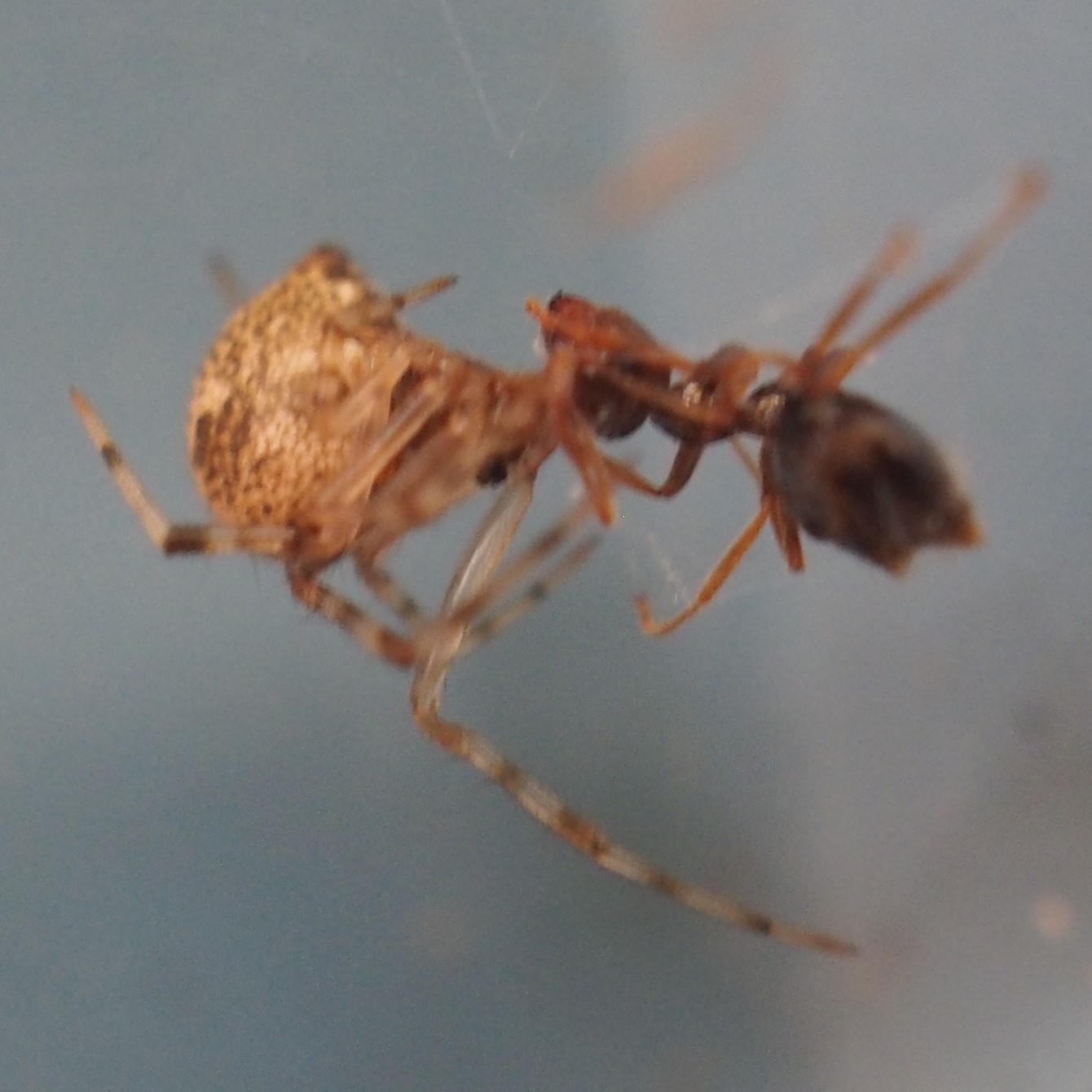
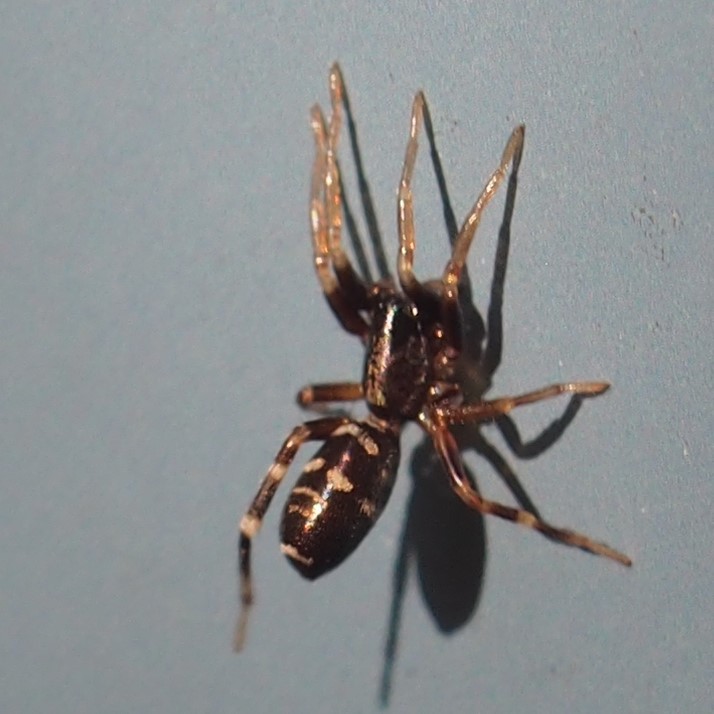
Here clinging to a bolt is an American Nursery Web Spider, a very young one (two shots). Third is a little mystery.
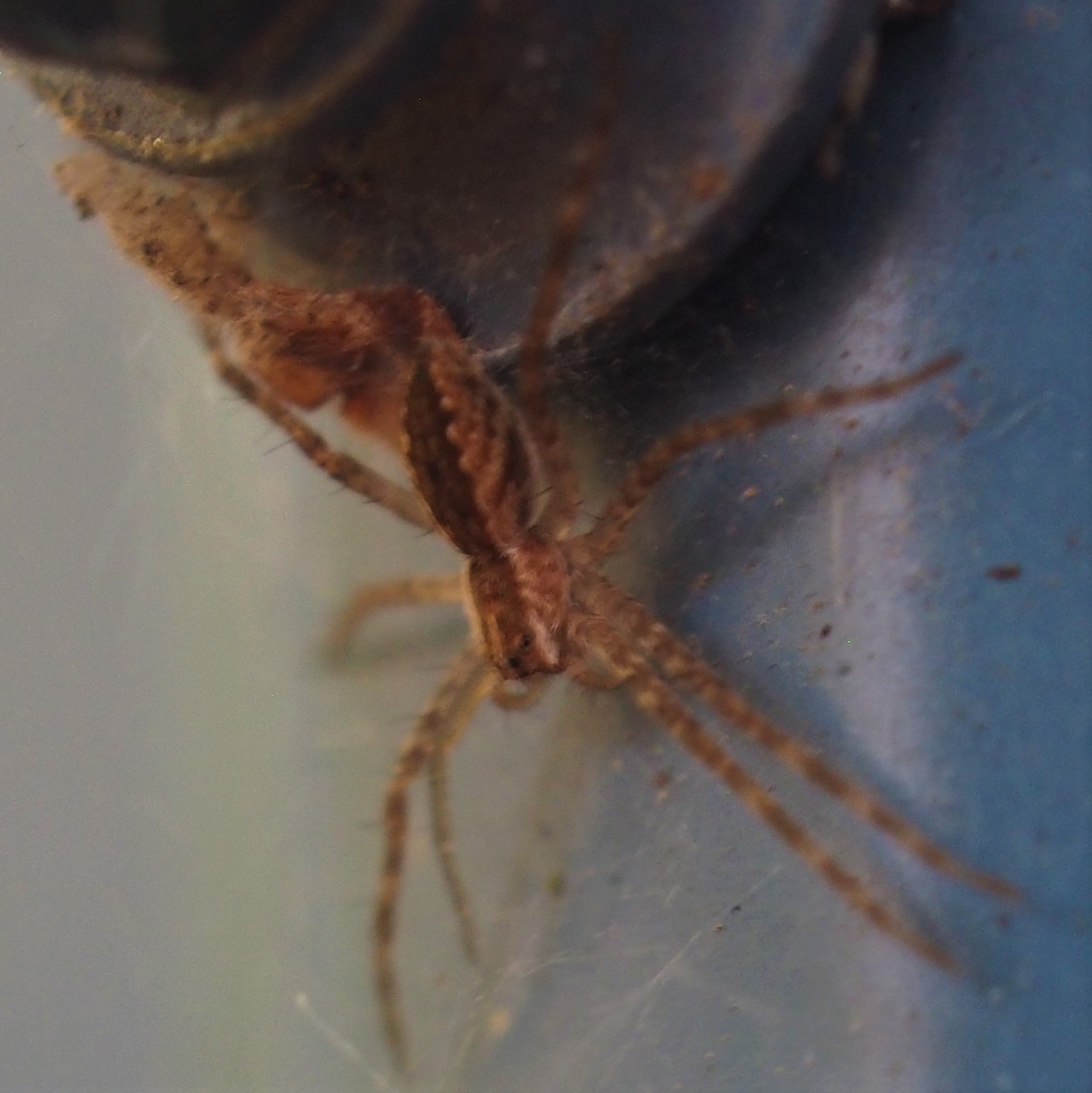
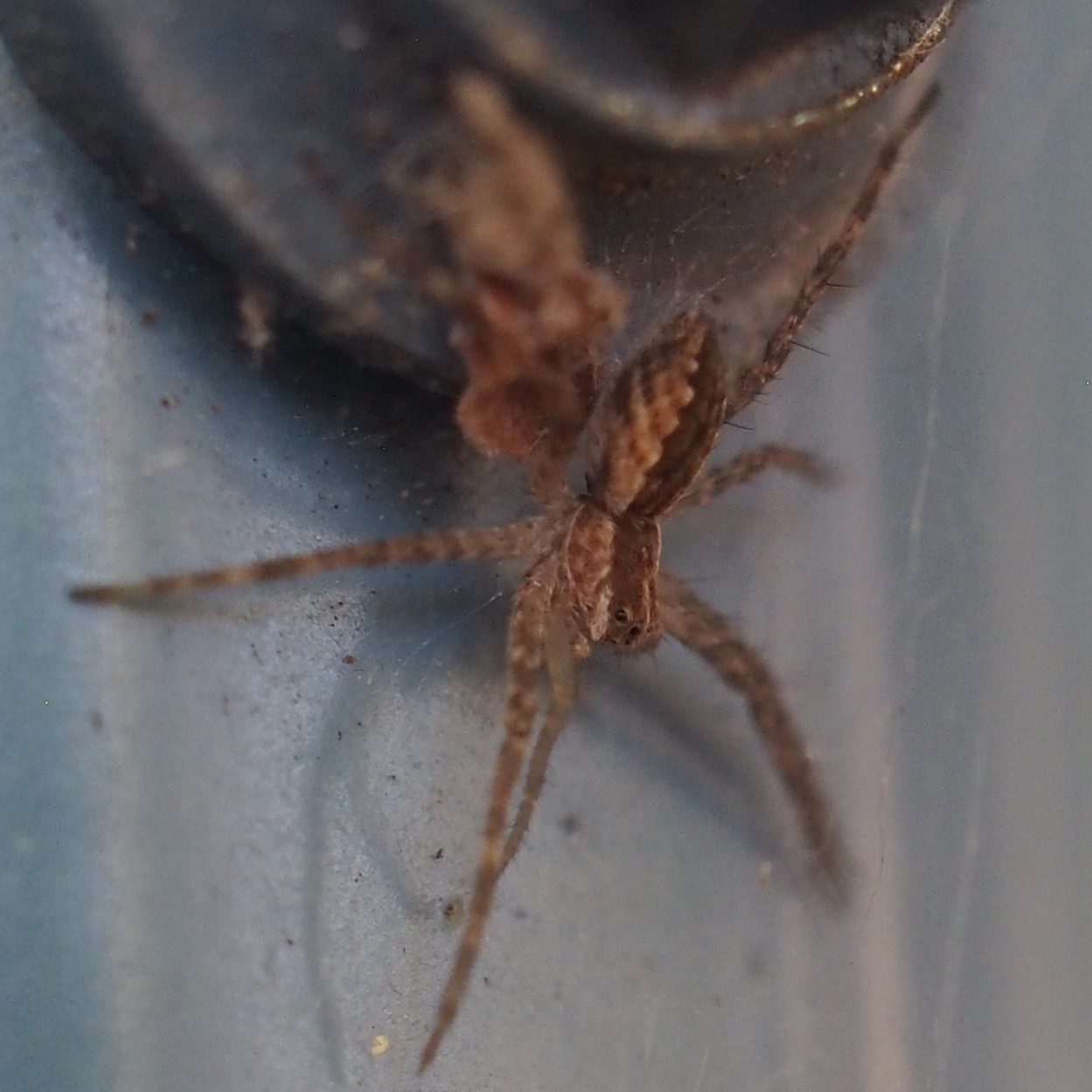
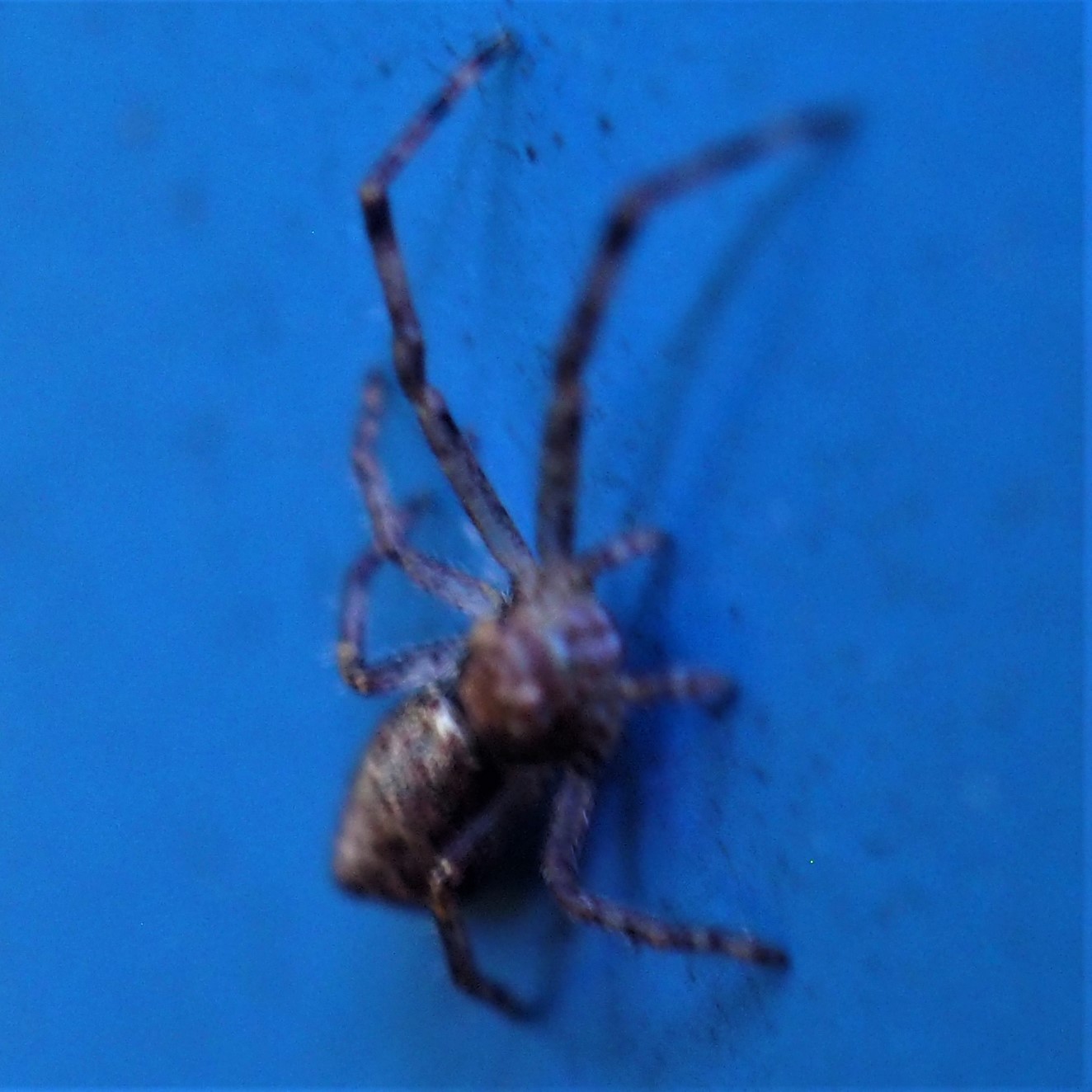
Here's a new Spider around here. It too seems to have been having trouble with Ephialtini larvae.
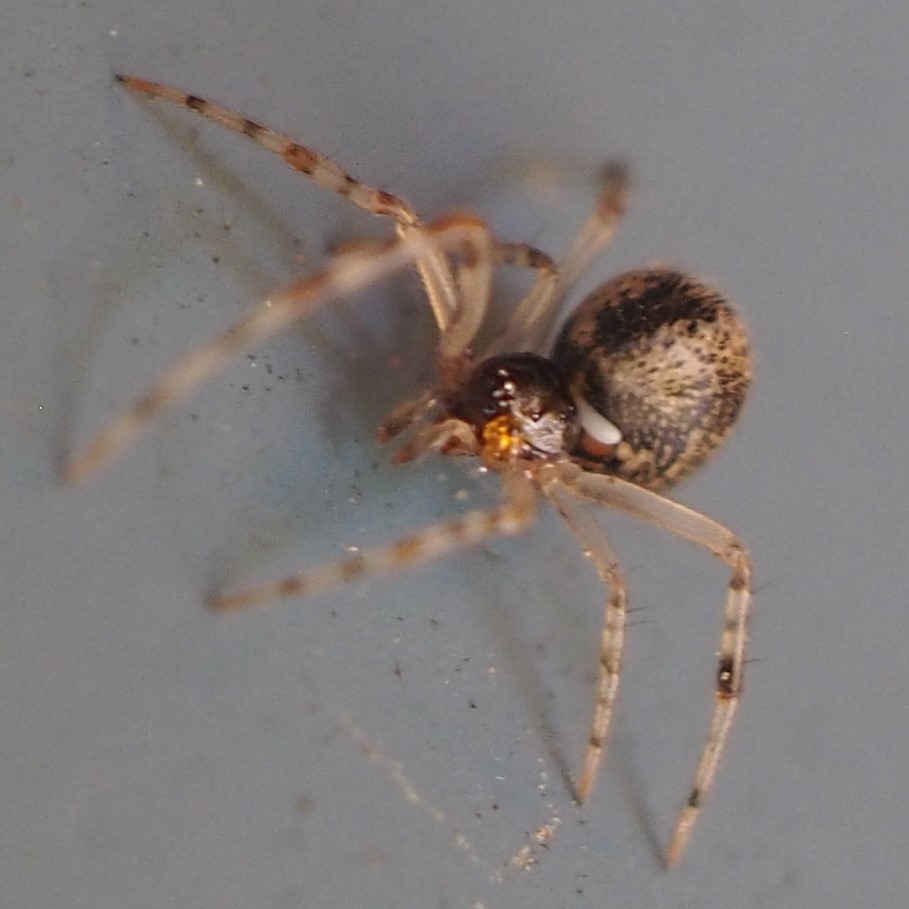
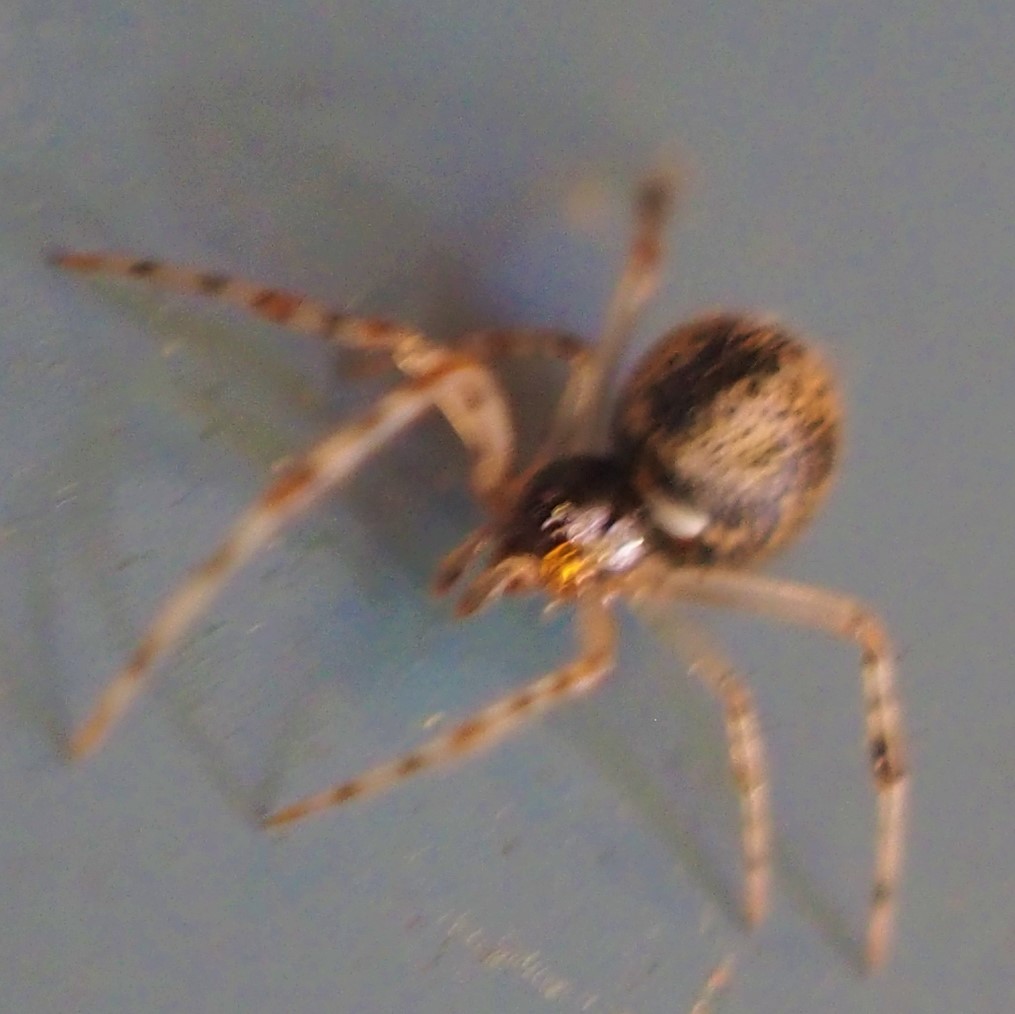
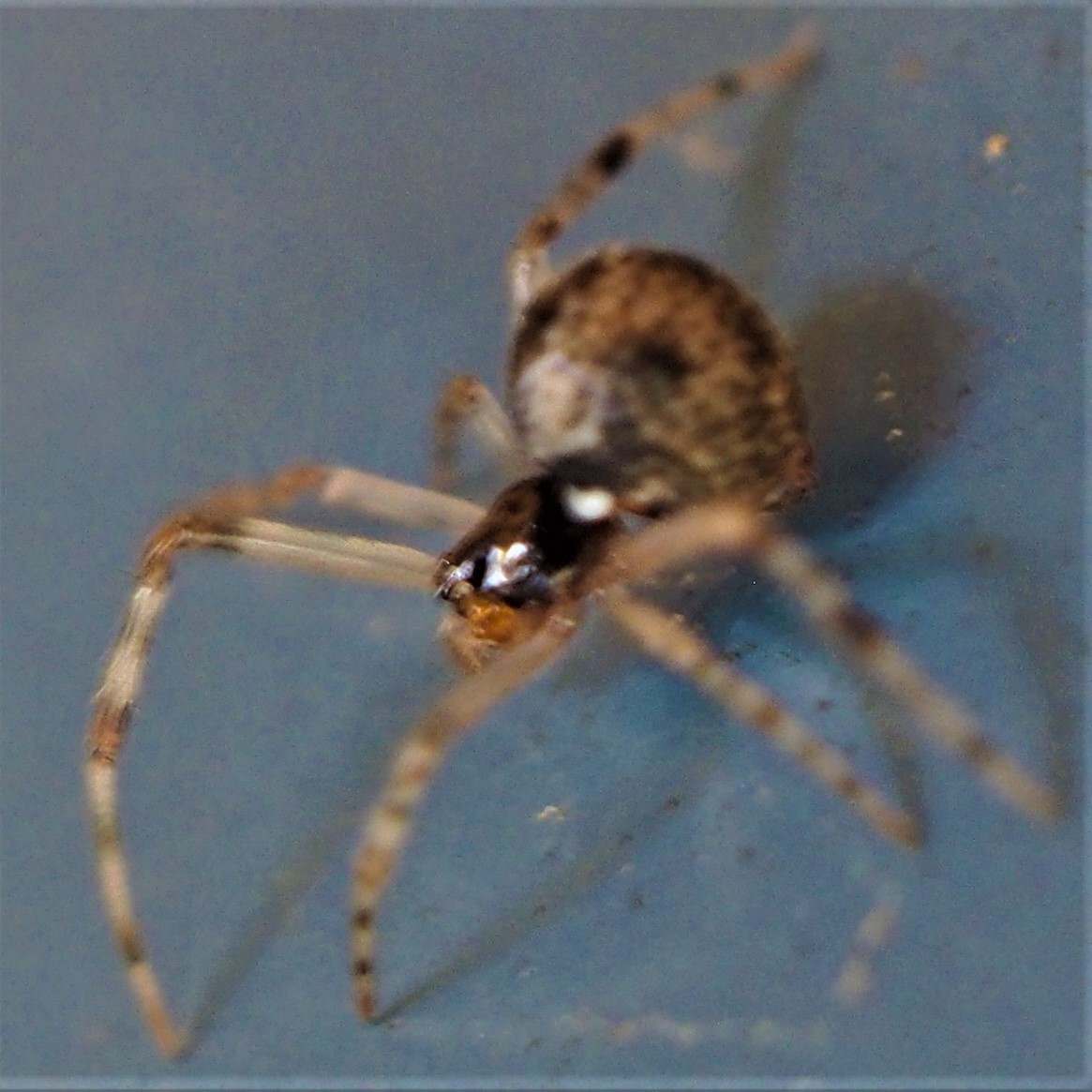
This is a new one for me - Trabeops aurantiacus. Believe it or not, it is a kind of Wolf Spider!
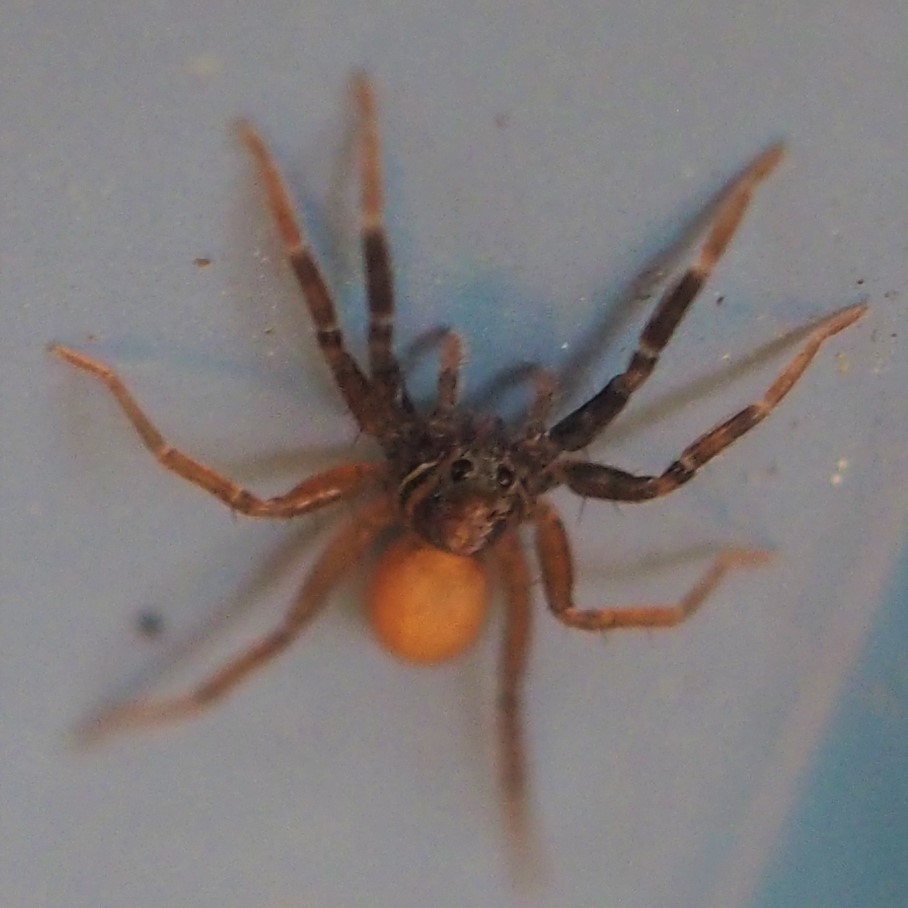

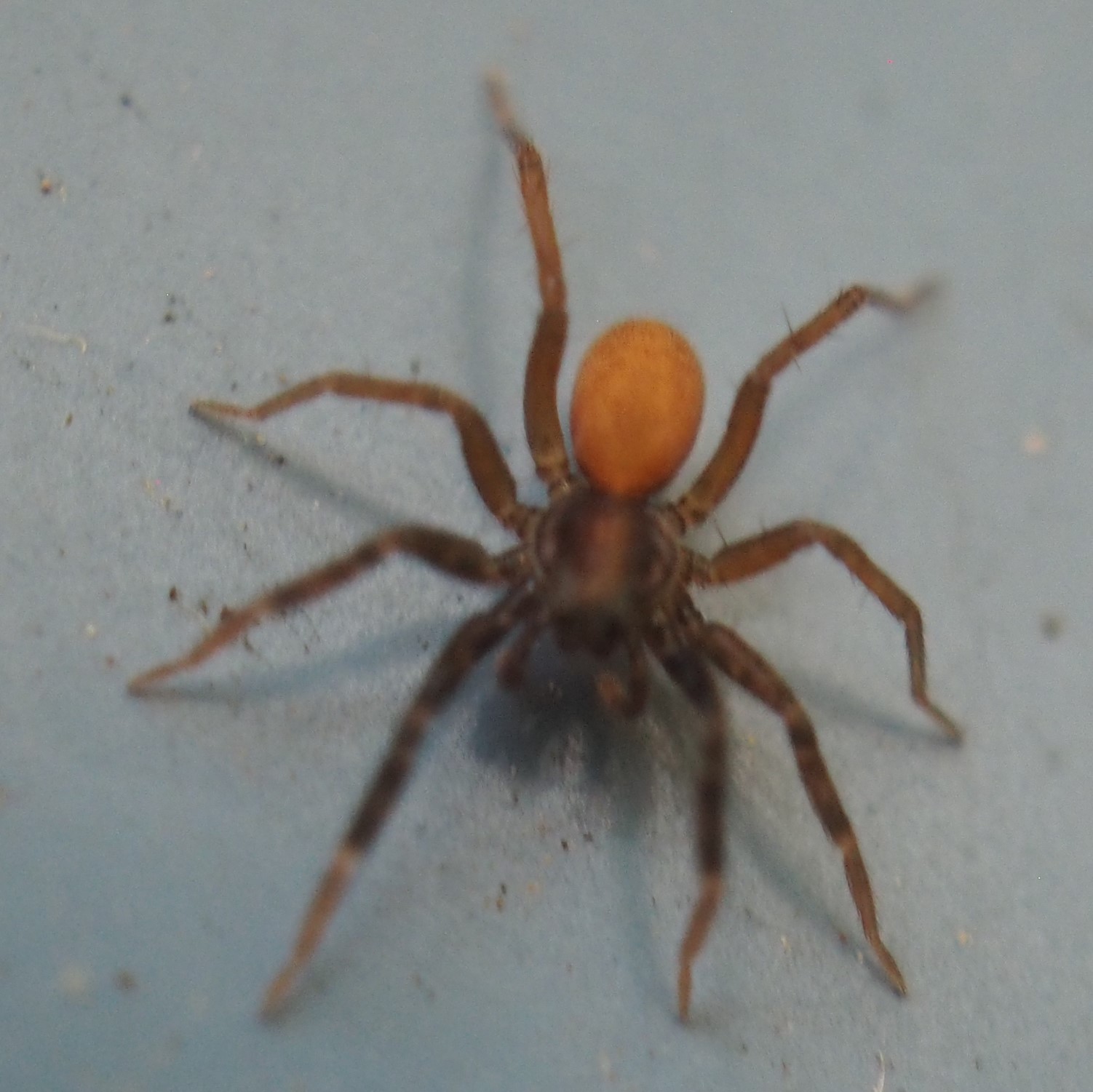
Here is that Pillbug (I think it's the Brickwork Pillbug) again. And we end up with a couple of Wasps. Second is the one I call Twizzler because of what it does with its antennae as it runs.
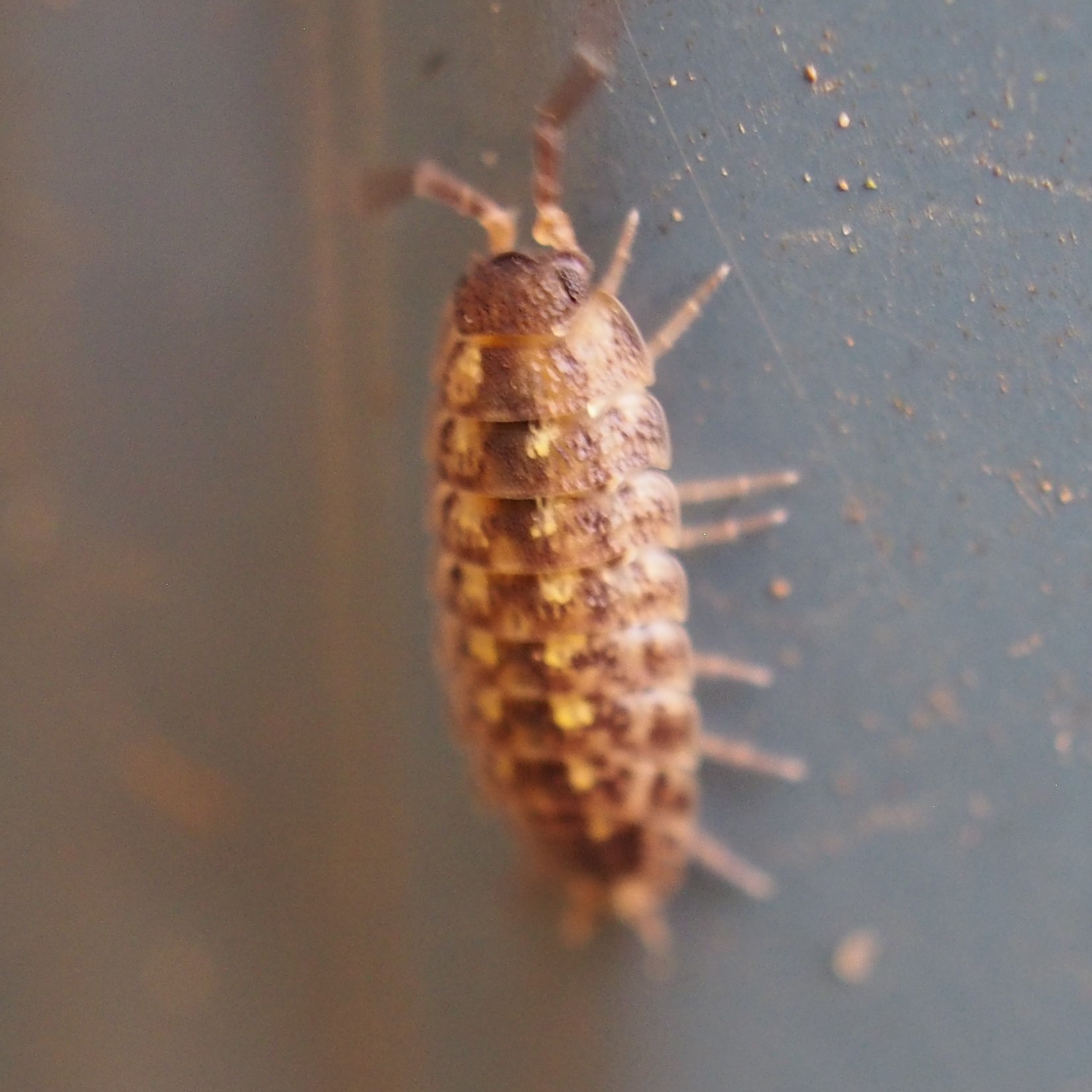
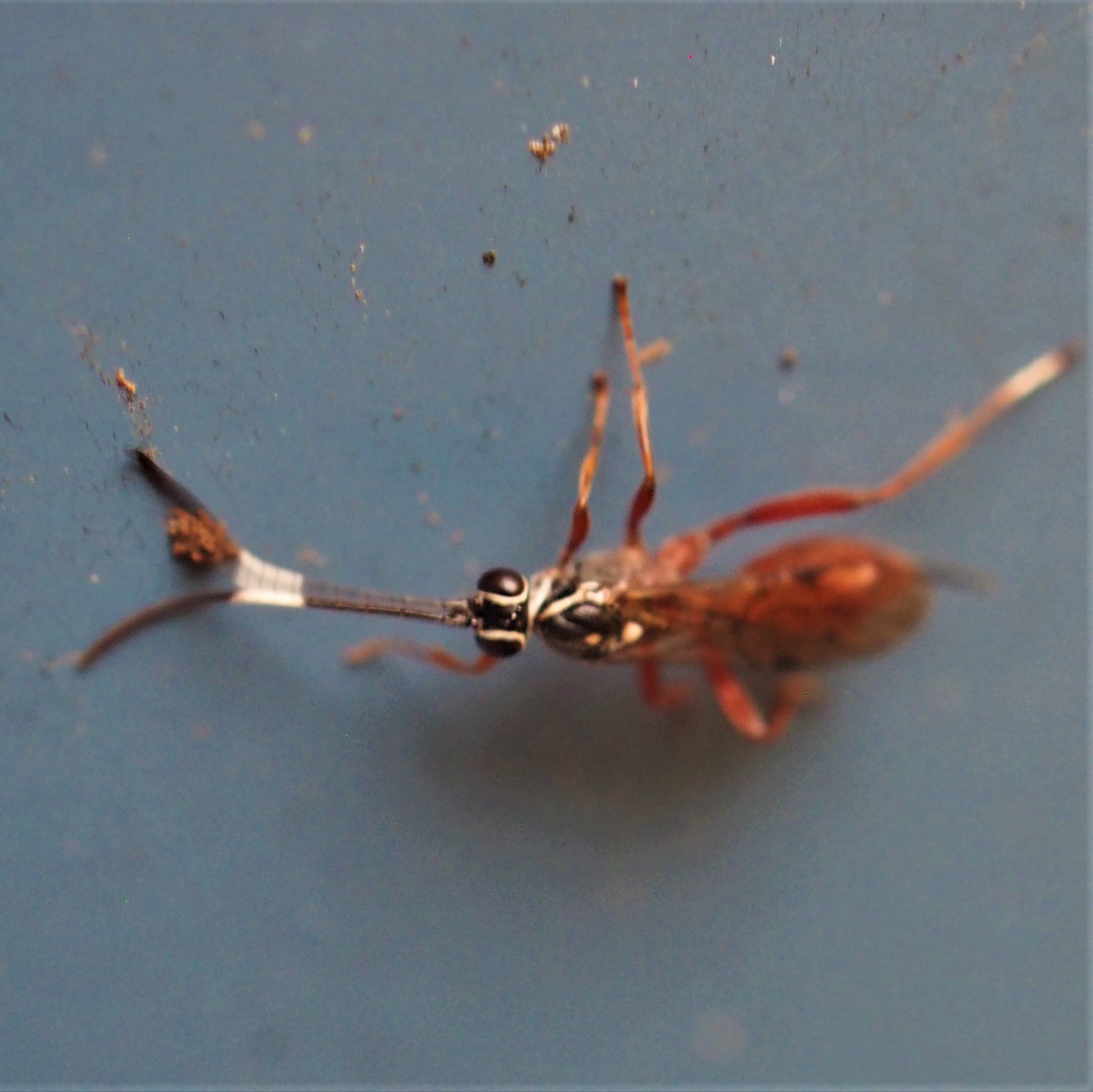
Well, Friends, another week has shot by. Every morning dark and chilly. But THIS morning Chaim woke me saying, Mom, look out the window! It was already 9:00 but after we reset the clocks to 8:00 and it was already sunny outside, it was like time-and-space traveling. I hope we never go back to Daylight Savings Time. I hope you won't mind if I get this little wish granted!
Love, Martha
Back to October 30, 2022
Forward to November 13, 2022
Back to main menu
copyright Martha O'Kennon 2022







































































